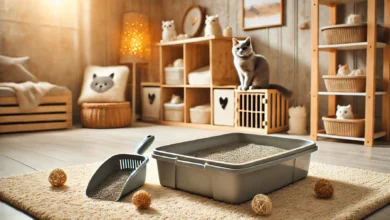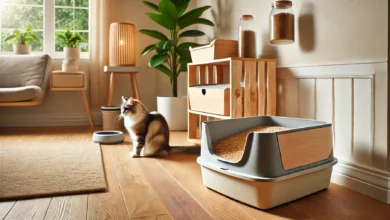How to Monitor Cat Health Through Litter Box Habits
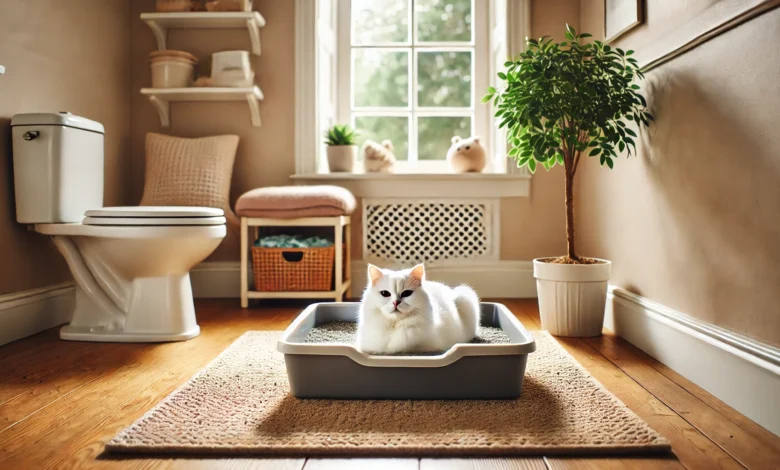
Monitoring cat health is often difficult, as cats are characteristically inclined to hide their illness.
One of the most accessible and efficient ways to monitor your cat’s health is through the litter box.
Much like people, a cat’s elimination pattern says much about its health.
By paying close attention to what is going on in that litter box, you can catch early warnings of everything from urinary tract infections to digestive problems.
In this guide, you will learn what is normal, what isn’t, and how you can use your cat’s litter box behavior to keep your furry friend healthy.
Table of Contents
Understanding Normal Cat Litter Box Behavior
Before addressing potential problems, it is important to understand what normal litter box behavior entails.
A healthy cat has regular bathroom habits, and any deviation from those habits typically means that a problem exists.
By understanding the normal parameters of litter box behaviors, you’ll be able to realize right away if something goes wrong and take action to maintain your cat’s health.
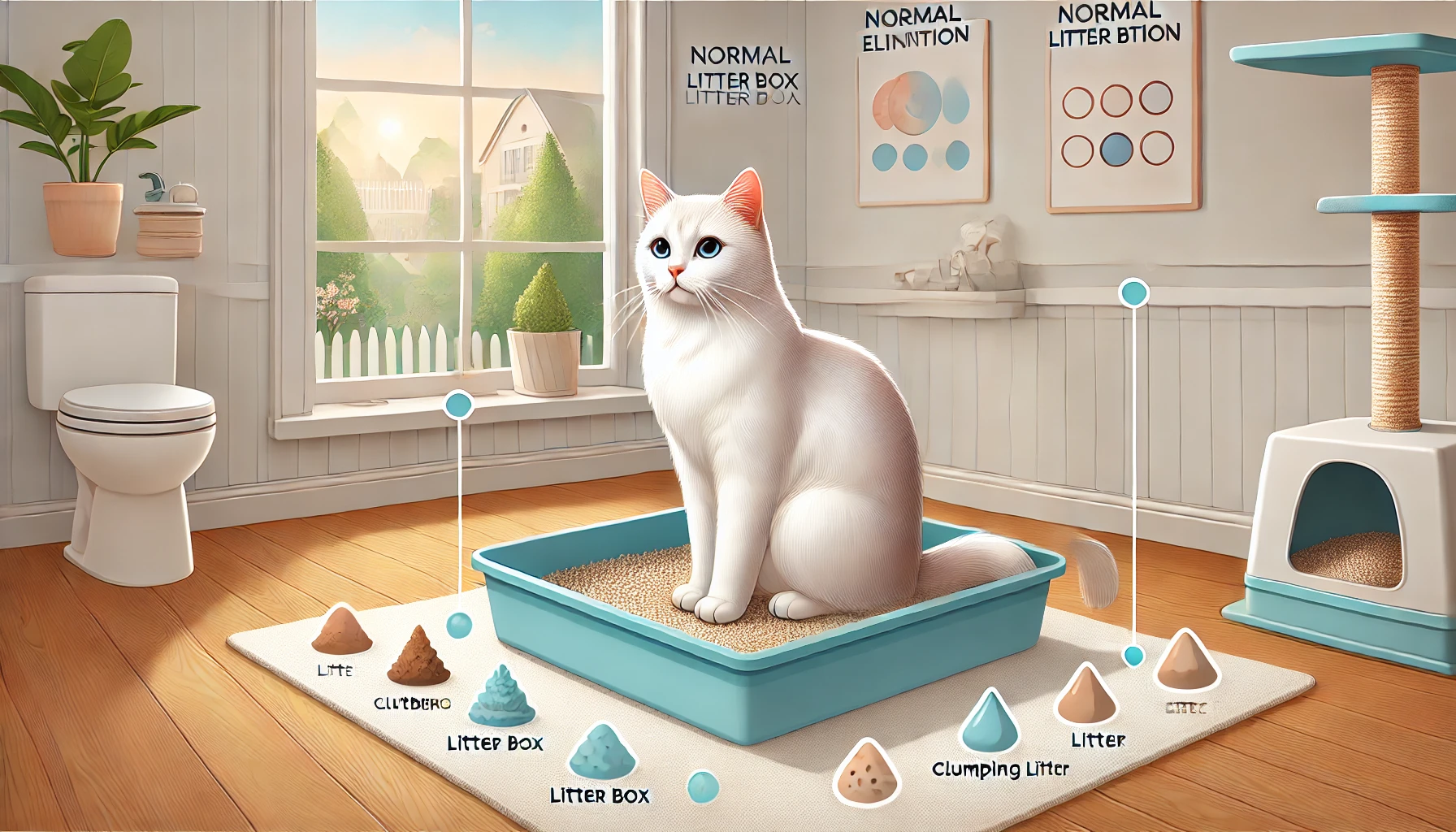
What Normal Litter Box Behaviors Look Like
A healthy cat uses the litter box multiple times per day.
For urination, a normal cat urinates 2 to 4 times daily with moderately sized clumps if you’re using clumping litter.
Concerning defecation, your cat should produce well-formed, brown stools once or twice every day.
These should neither be too hard nor too soft, and there shouldn’t be an overwhelming odor, which indicates a healthy digestive system and overall cat health.

Urination Frequency and Type
Your cat’s urination could depend on what it eats, how hydrated it is, and even on the weather.
If your cat consumes enough water, it will urinate more frequently, and its urine should be a pale yellow color.
Dark-colored urine or straining in the litter box may indicate dehydration or urinary problems, which are common health concerns for cats, and that’s when you should consult a vet.
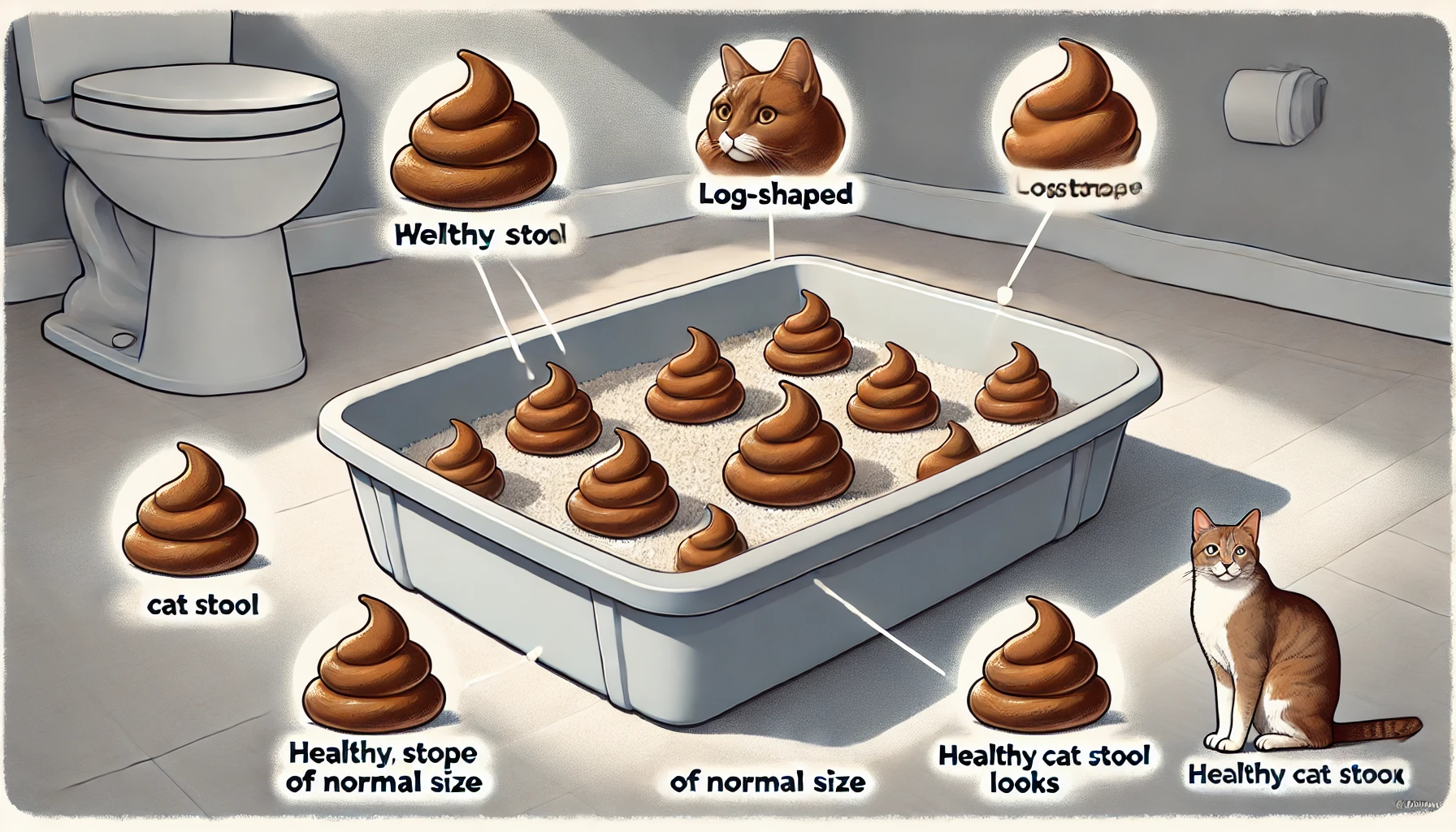
Stool: Size, Shape, and Consistency
Your cat’s stool is a strong indicator of its general health and digestive condition.
Normal cat stool is log-shaped, firm, and dark brown in color.
If the stool becomes loose, watery, and frequent, your cat may have diarrhea, which can signal digestive upset.
Hard, dry stool, on the other hand, points to constipation.
The presence of blood in the stool is a warning sign of an impending digestive disorder, such as food intolerance, parasites, or inflammation of the digestive tract, and requires prompt attention from a veterinarian.
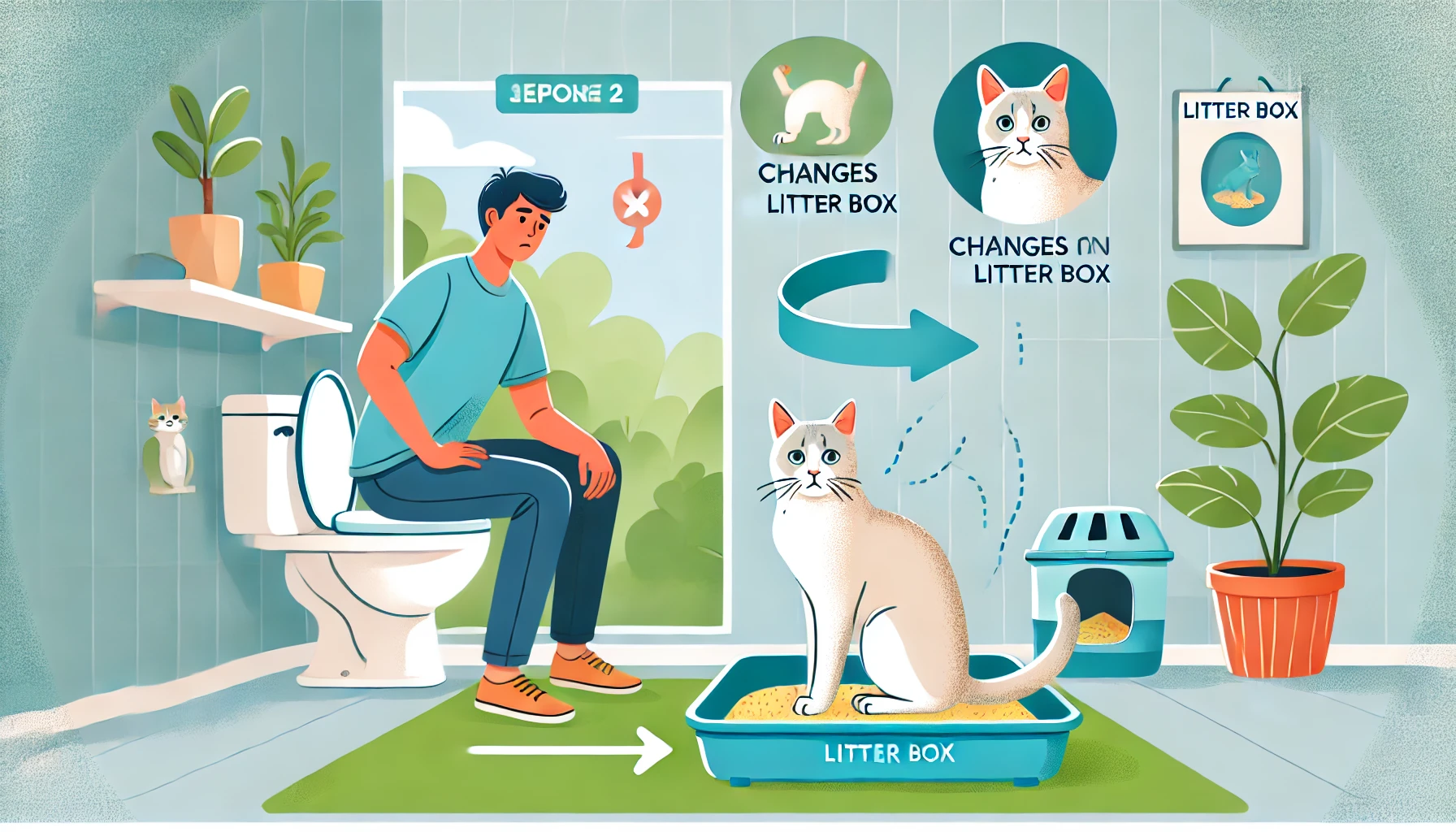
How to Recognize Changes in Behavior
The first signs of any underlying health problem often manifest through changes in litter box habits.
You may notice that your cat is visiting the litter box too frequently or having accidents outside the box.
It’s important to also monitor how much your cat is eating and drinking.
If they drink too little or too much, their elimination habits will change accordingly.
These changes should be investigated with a veterinarian to rule out serious health issues and ensure your cat remains healthy.
Knowing what is normal with your cat’s litter box habits is key to identifying potential health problems early. Stay aware of your cat’s regular bathroom routine to keep their health in check.

Common Litter Box Problems and What They Mean
Changes in your cat’s litter box behavior are an early warning sign that something is off.
While some changes might be temporary or insignificant, a variety of those actions can hint at more serious cat health issues.
Being a good cat owner requires understanding what these litter box behaviors indicate about the health of your cat.
Recognizing these issues early allows you to take prompt action to get your cat the help they need.
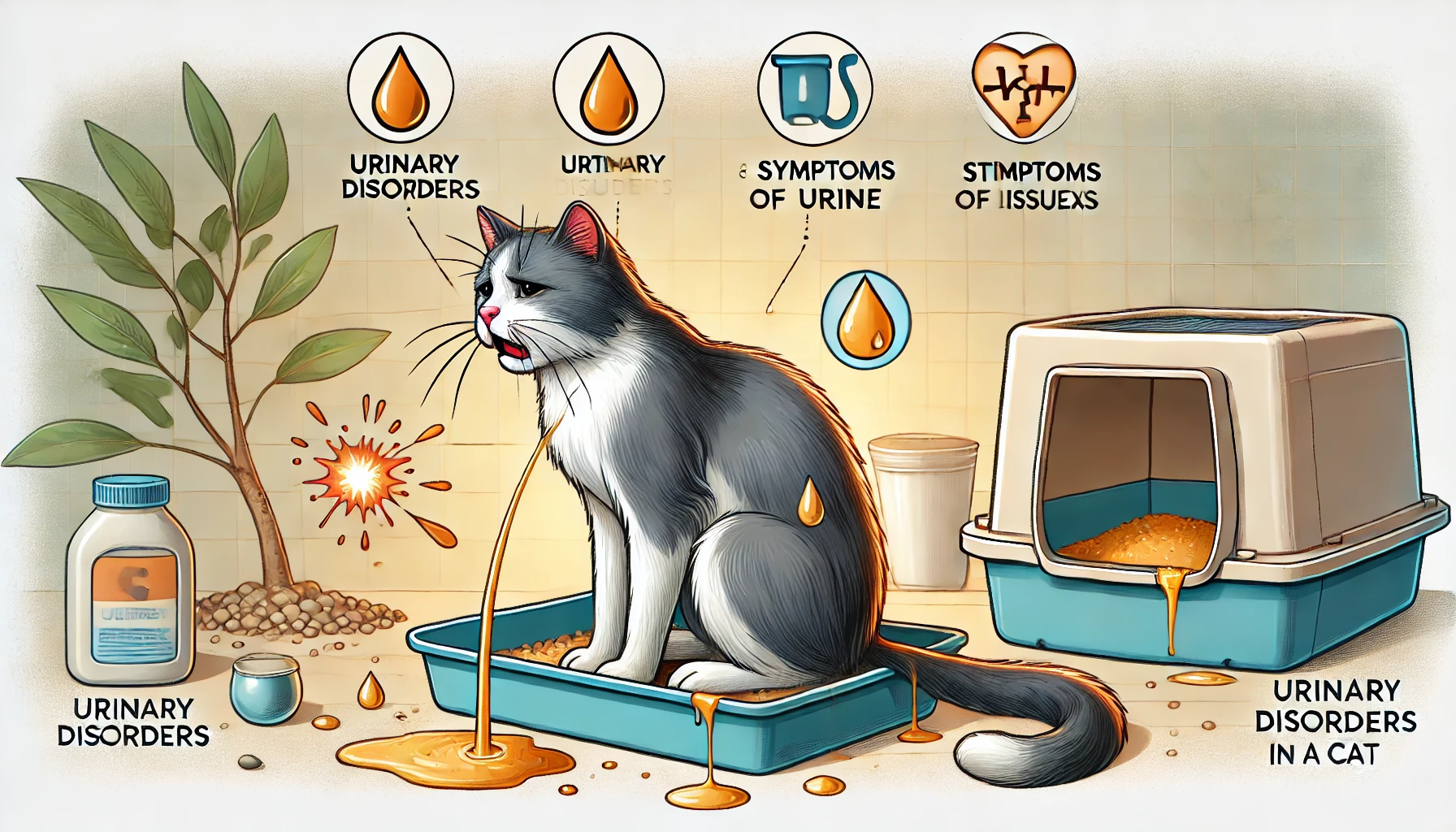
Signs and Symptoms of Urinary Disorders
Urinary tract issues are particularly common in older cats.
One of the most frequent signs of urinary problems includes frequent trips to the litter box with little to no urine being excreted.
Your cat may also make painful or strained noises while attempting to urinate.
These may be caused by a urinary tract infection (UTI), bladder stones, or more severe conditions like feline lower urinary tract disease (FLUTD).
- Frequent attempts to urinate: This could be a sign that your cat is distressed or experiencing a blockage.
- Straining or crying out: Indicates pain, which could be due to an infection or obstruction.
- Blood in the urine: A visible symptom of infection or inflammation that requires immediate veterinary attention.
If you notice any of these symptoms, seek immediate attention from your vet since untreated urinary problems can result in critical complications such as kidney damage or even death.
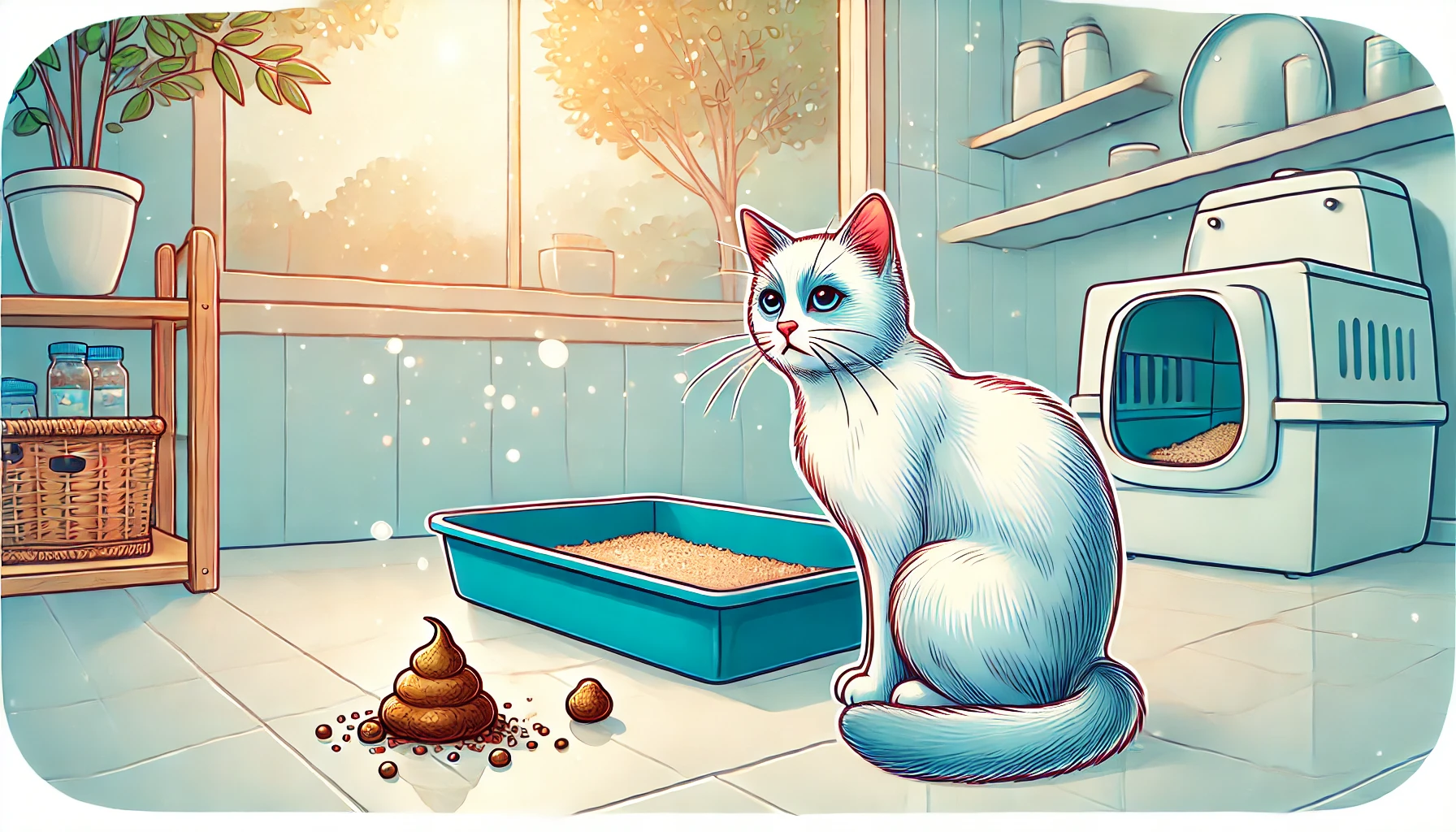
Digestive Problems Signs
Your cat’s stool provides important clues about its digestive health.
Diarrhea, especially if it persists for more than a day or two, may indicate issues ranging from food intolerance to parasites or infections.
Constipation is another common complaint, often due to dehydration, poor diet, or underlying gastrointestinal problems.
- Diarrhea: Persistent loose stool may be caused by an infection, parasites, or dietary issues.
- Constipation: Hard, dry feces often indicate dehydration or inadequate nutrition.
- Mucus or blood in the stool: This can indicate inflammation of the digestive tract or serious conditions like colitis.
If these symptoms persist, it’s advisable to consult your veterinarian to determine whether an underlying cause needs to be addressed for your cat’s health.
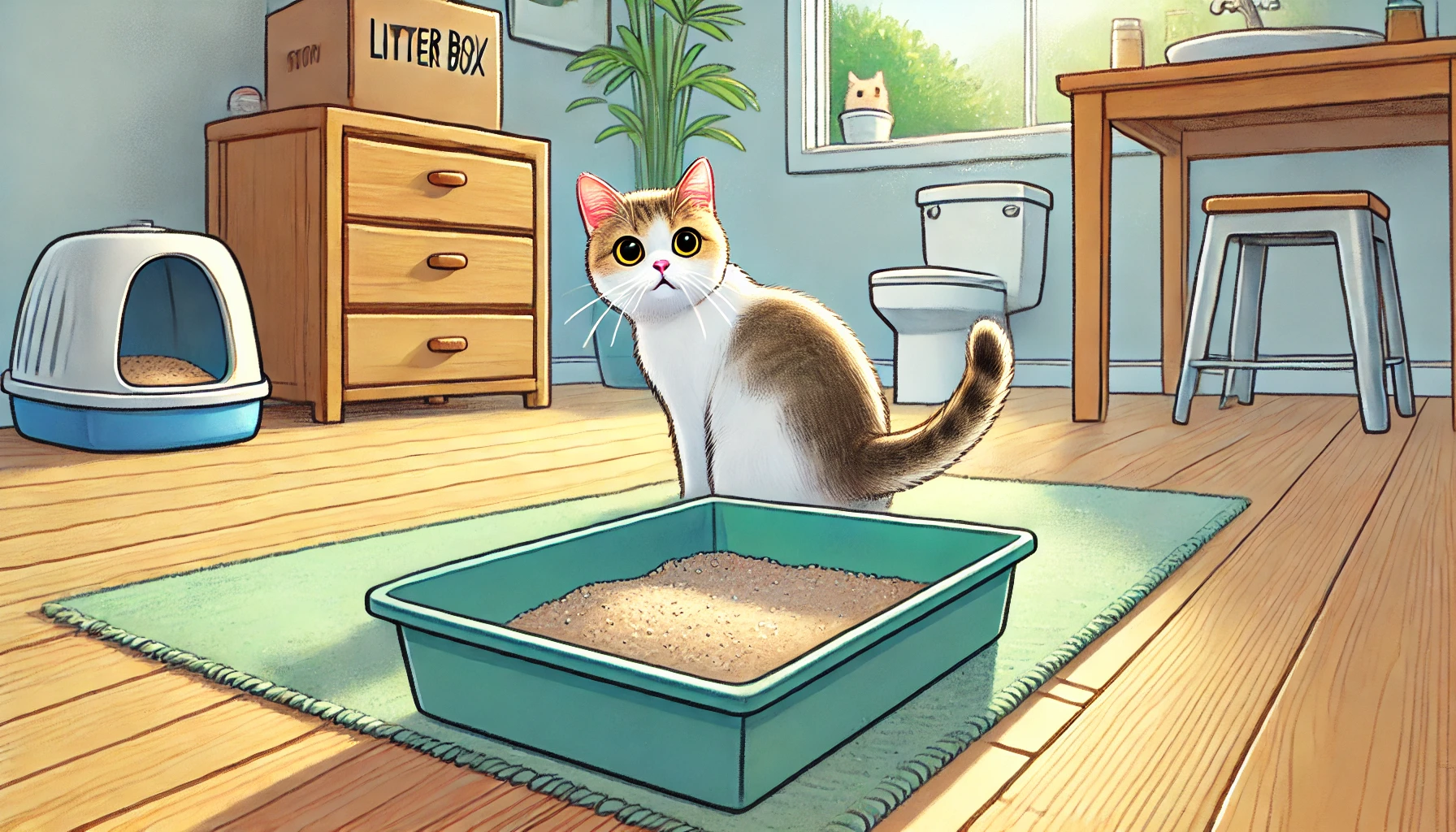
Litter Box Aversion and Its Causes
Litter box aversion occurs when cats avoid using their litter box entirely.
This could be due to stress, changes in their environment, or dissatisfaction with the litter box setup.
Cats are creatures of habit, so even small changes in their routine can easily stress them out.
If your cat starts avoiding the litter box, evaluate any recent changes in the home environment.
- Stress and anxiety: Cats may develop aversions to the litter box due to changes like a new pet, a new baby, or even a new type of litter.
- Dirty litter box: Cats are very particular about cleanliness, and a filthy box will drive them away.
- Medical issues: Pain associated with urination or defecation can lead to avoidance behaviors, as the cat may associate the litter box with discomfort.
To resolve litter box avoidance, keep the litter box clean and in the same location.
Make sure the litter box is placed in a quiet spot and use litter that your cat prefers.
Consistency in these aspects can help alleviate litter box aversion.
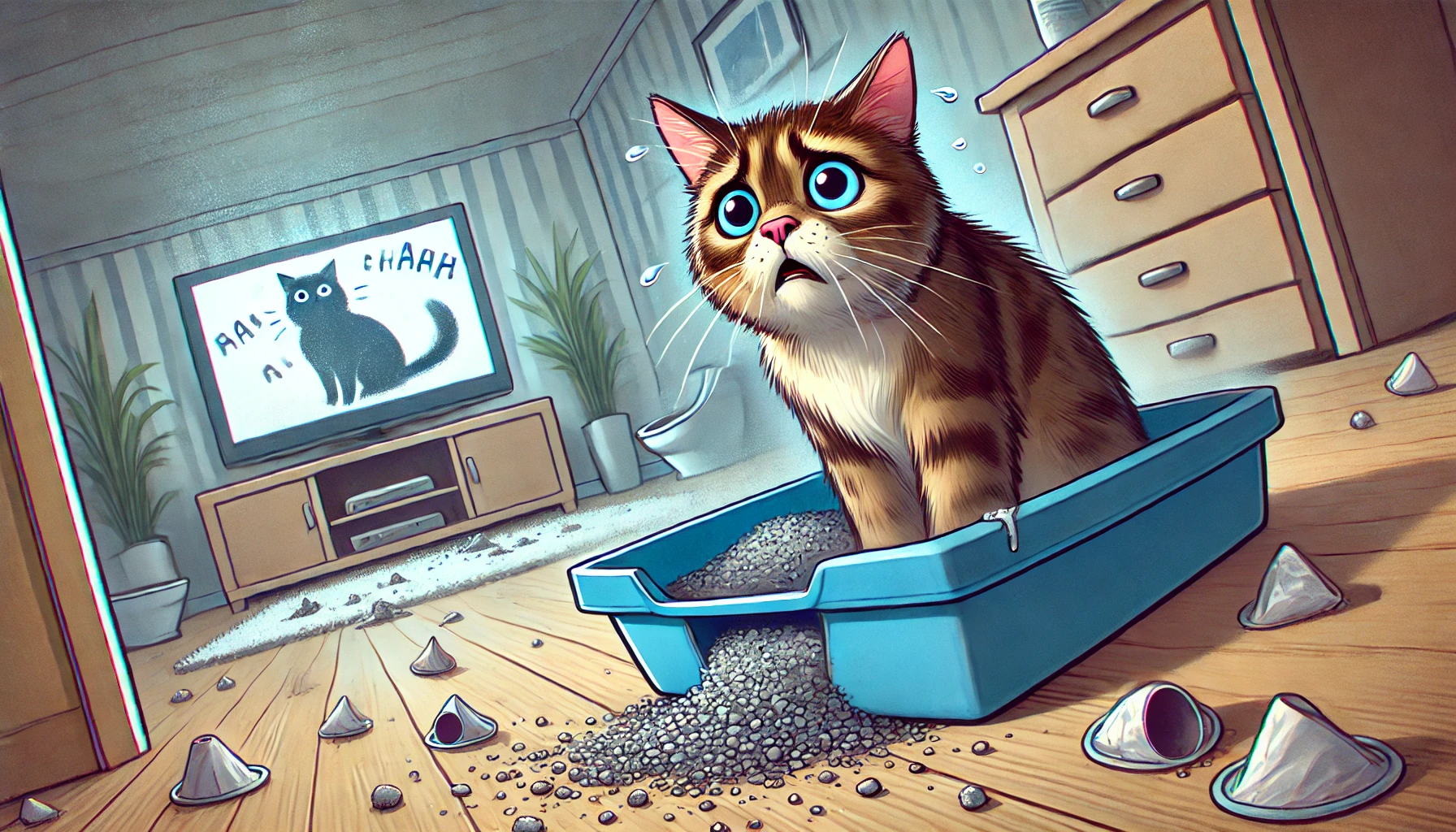
Stress-Related Litter Box Problems
Stress is a significant factor that can lead to litter box problems.
Cats are highly sensitive animals, and even small changes in their environment or routine can cause stress, leading to avoidance or accidents in the house.
Some common stressors include moving to a new home, introducing new pets, or loud noises.
- Changes in environment: Relocation to a new home or rearranging furniture can trigger anxiety.
- New pets or people: The addition of a new pet or family member can result in stress-related litter box issues.
- Loud noises or unfamiliar visitors: Cats may be startled by loud noises or frequent visitors, leading to behavioral problems.
Managing your cat’s stress is crucial.
Providing a quiet, consistent environment and maintaining familiar routines can help minimize anxiety and prevent litter box problems.
If stress-related issues persist, consult with a veterinarian or a certified cat behaviorist for further advice on how to improve your cat’s health and well-being.
If your cat starts to deviate from its usual litter box habits, it’s time to investigate. Early intervention can prevent serious health issues.
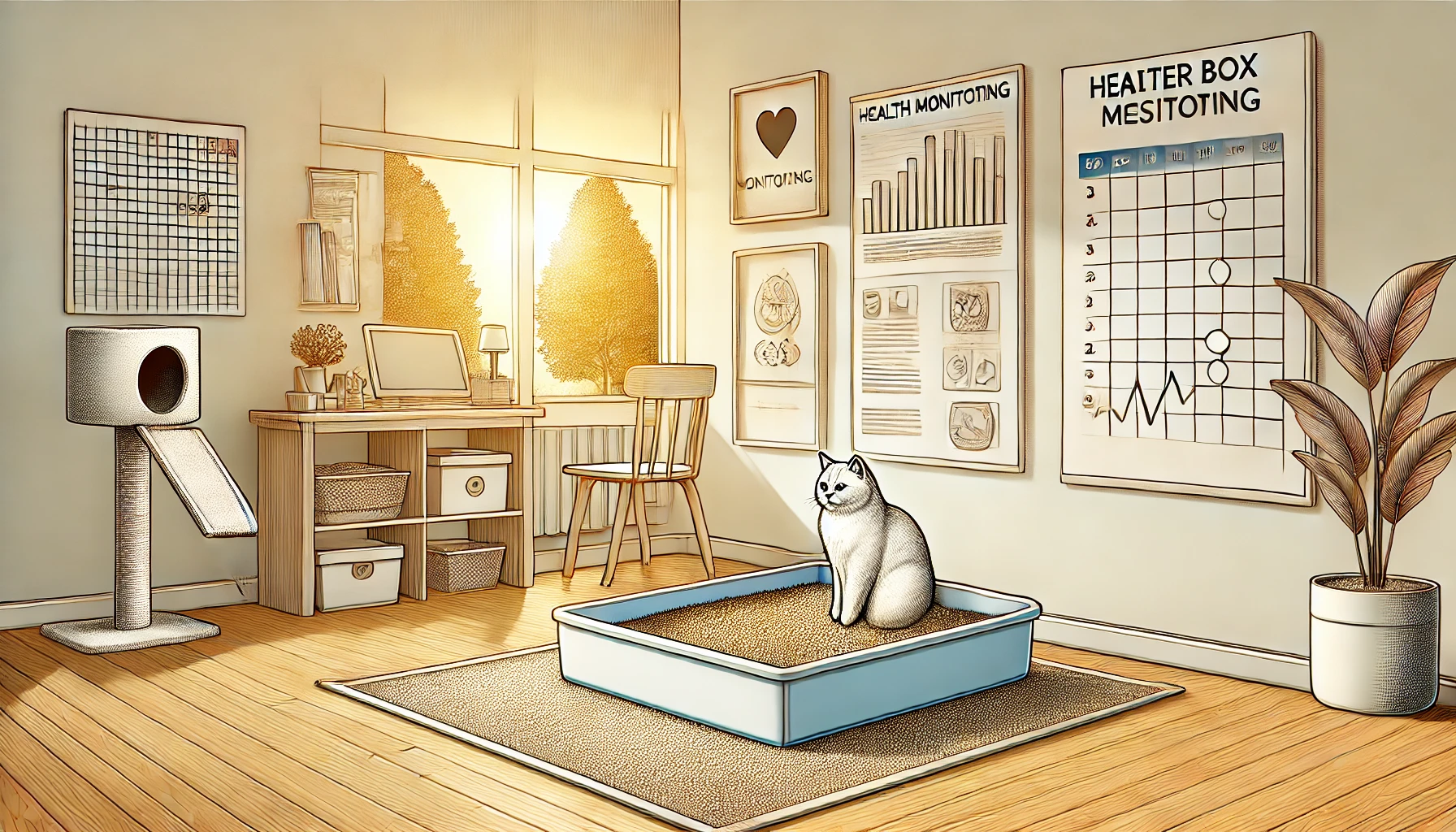
Setting Up the Litter Box for Ease of Health Monitoring
Proper caretaking of the litter box can make monitoring your cat’s health easier and more effective.
From choosing the right litter to placing the box in the right location and keeping it clean, following these steps will help you observe your cat’s routine and spot any irregularities.
A clean and accessible litter box is crucial for proper use and much easier for you to monitor for potential signs of health problems.
Let’s dive into the best practices for setting up a litter box that supports your cat’s health and allows for easy monitoring.
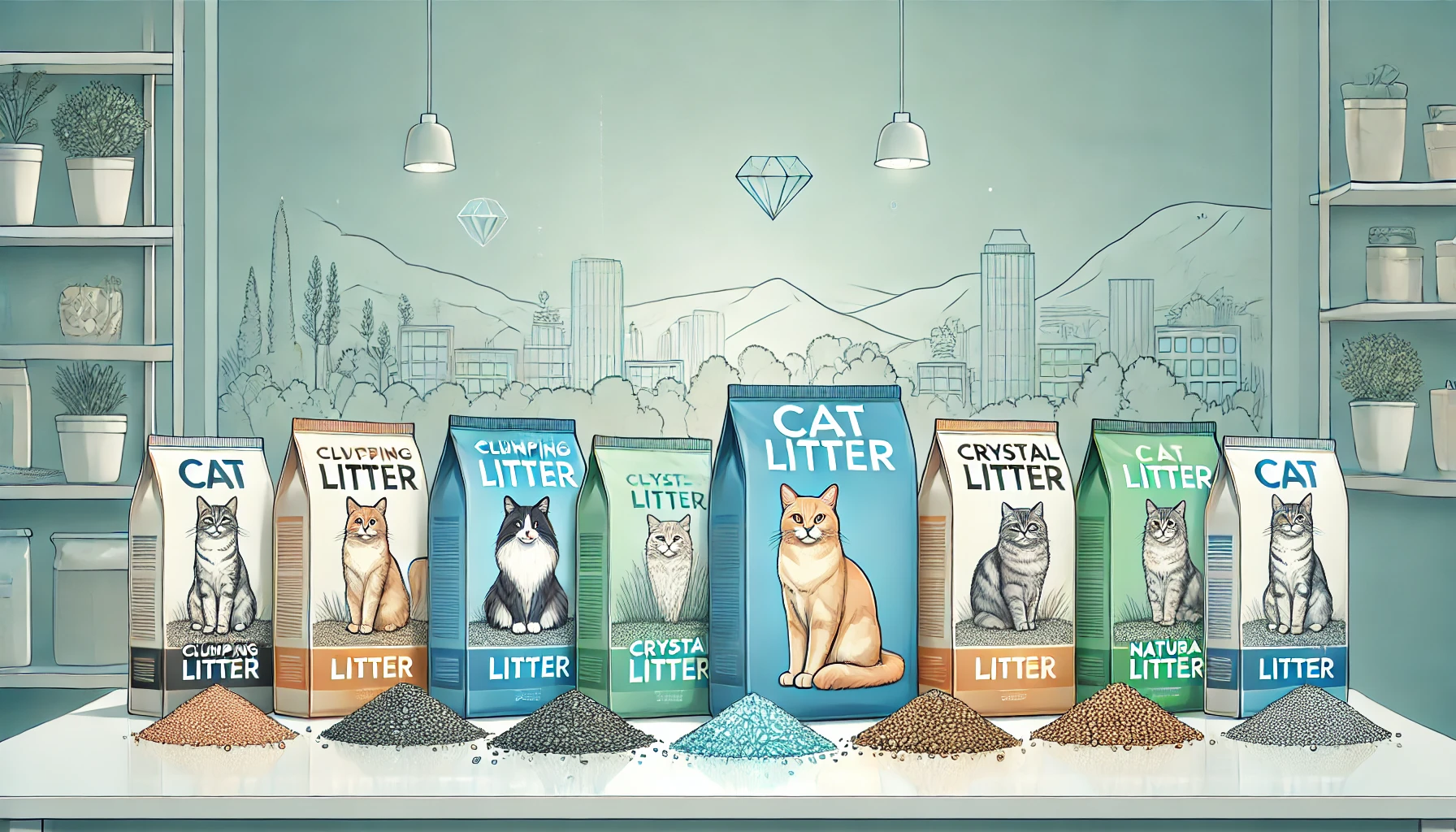
Choosing the Right Litter Type for Monitoring
The type of litter you choose can make all the difference in your ability to monitor your cat’s health.
It is highly recommended to switch to clumping litter, as it forms a hard clump around urine, making it easy to monitor the frequency and consistency of urination.
Some specialized litters even change color when they detect abnormalities in the urine, such as pH imbalances or blood, which helps in the early detection of cat health problems.
- Clumping litter: Makes it much easier to observe the size and frequency of urine clumps, which are indicative of hydration and urinary health.
- Health-monitoring litter: Some litters change color to alert you to issues like blood in the urine or abnormal pH levels, helping detect urinary tract infections early.
- Non-toxic, dust-free litter: Reduces the risk of respiratory problems for both you and your cat.
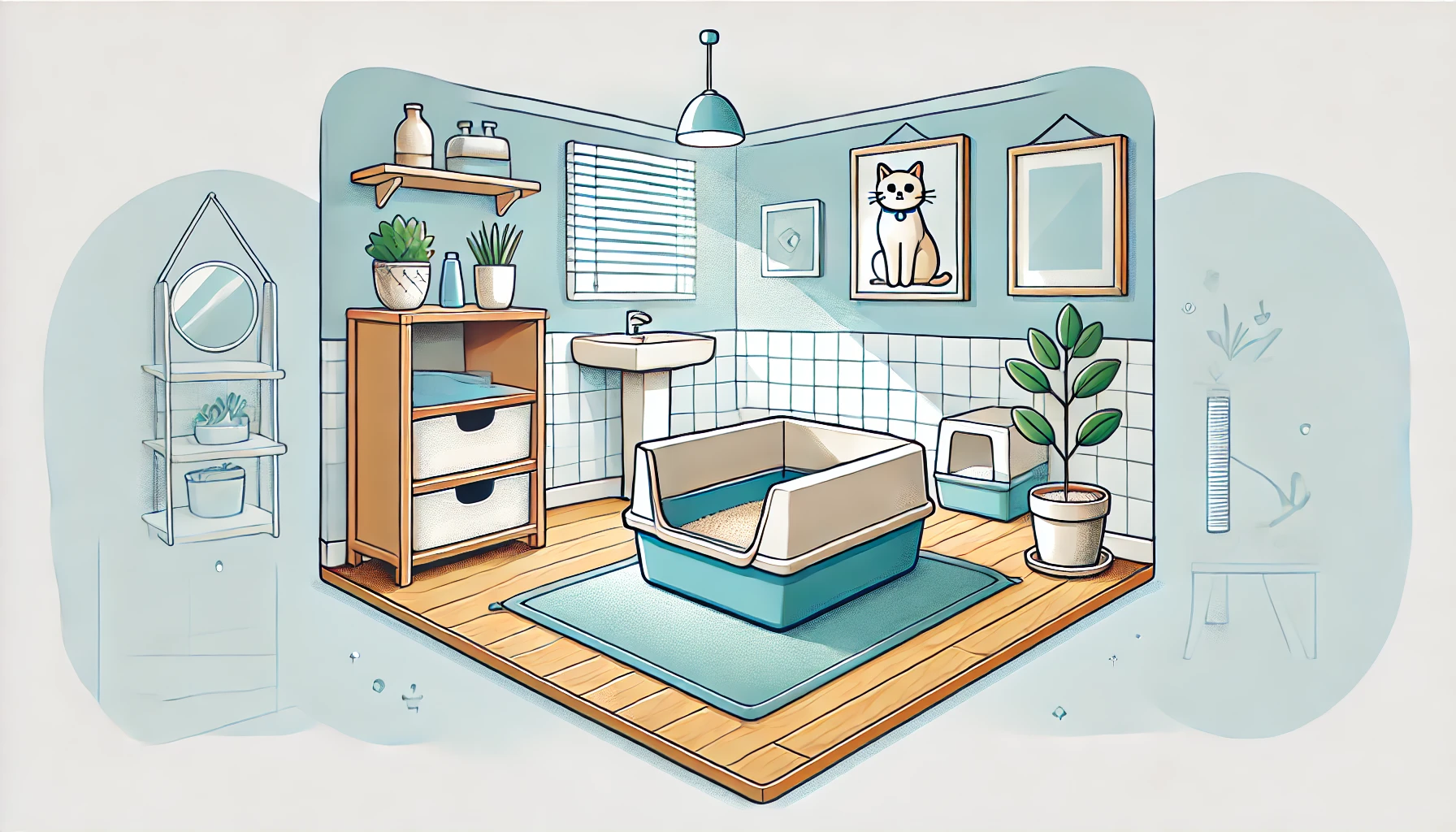
Proper Placement of the Litter Box and Its Significance
The placement of the litter box can impact both your cat’s behavior and your ability to monitor its health.
An accessible litter box, placed in a quiet and private area, is highly recommended.
Cats prefer to relieve themselves in a safe, quiet environment, away from noisy, high-traffic areas.
This reduces stress and ensures consistent litter box use, making it easier for you to track your cat’s health habits.
- Quiet, private location: Reduces your cat’s stress and helps establish a routine that makes monitoring easier.
- Avoid high-traffic areas: Placing the litter box in a busy area can cause anxiety, leading to avoidance behaviors.
- Multiple boxes for multi-cat households: Cats are territorial, so multiple litter boxes prevent conflict and allow for better health monitoring of each individual cat.
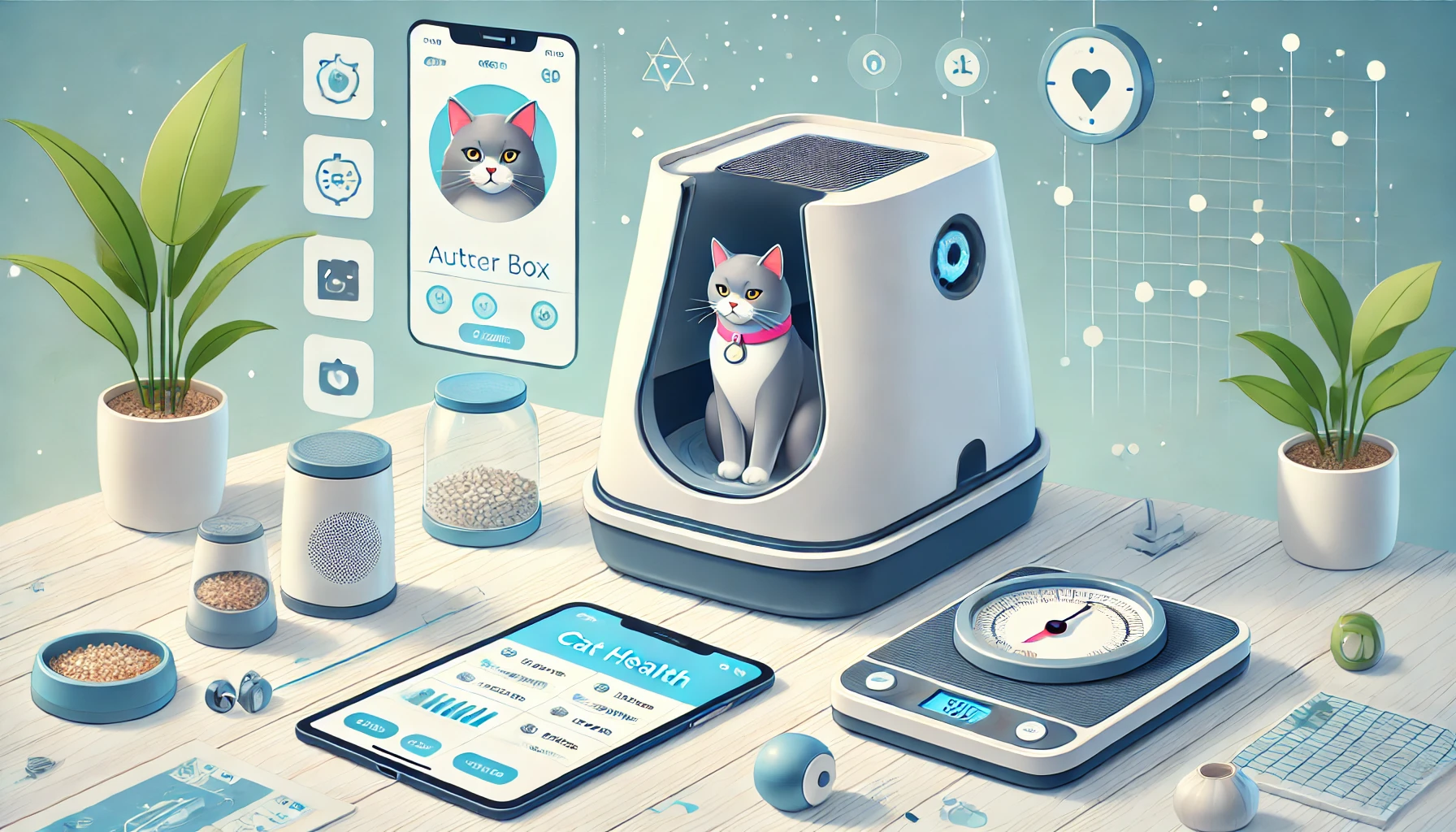
Tools and Gadgets That Help Monitor Cat Health
There are various gadgets and tools that can help you monitor your cat’s litter box activities more closely.
High-tech litter boxes with sensors track how often your cat uses the box, while some even measure the weight of both your cat and its waste.
These devices provide valuable data that can help you detect early signs of health problems.
- Automated litter boxes with sensors: Track how often your cat visits the litter box, allowing you to monitor urination and defecation frequency.
- Smart litter boxes with weight sensors: Measure your cat’s weight and waste output, helping to detect weight loss, gain, or digestive issues.
- Health-monitoring apps: Some smart litter boxes connect to apps that provide detailed reports on your cat’s litter box habits and alert you to abnormalities.
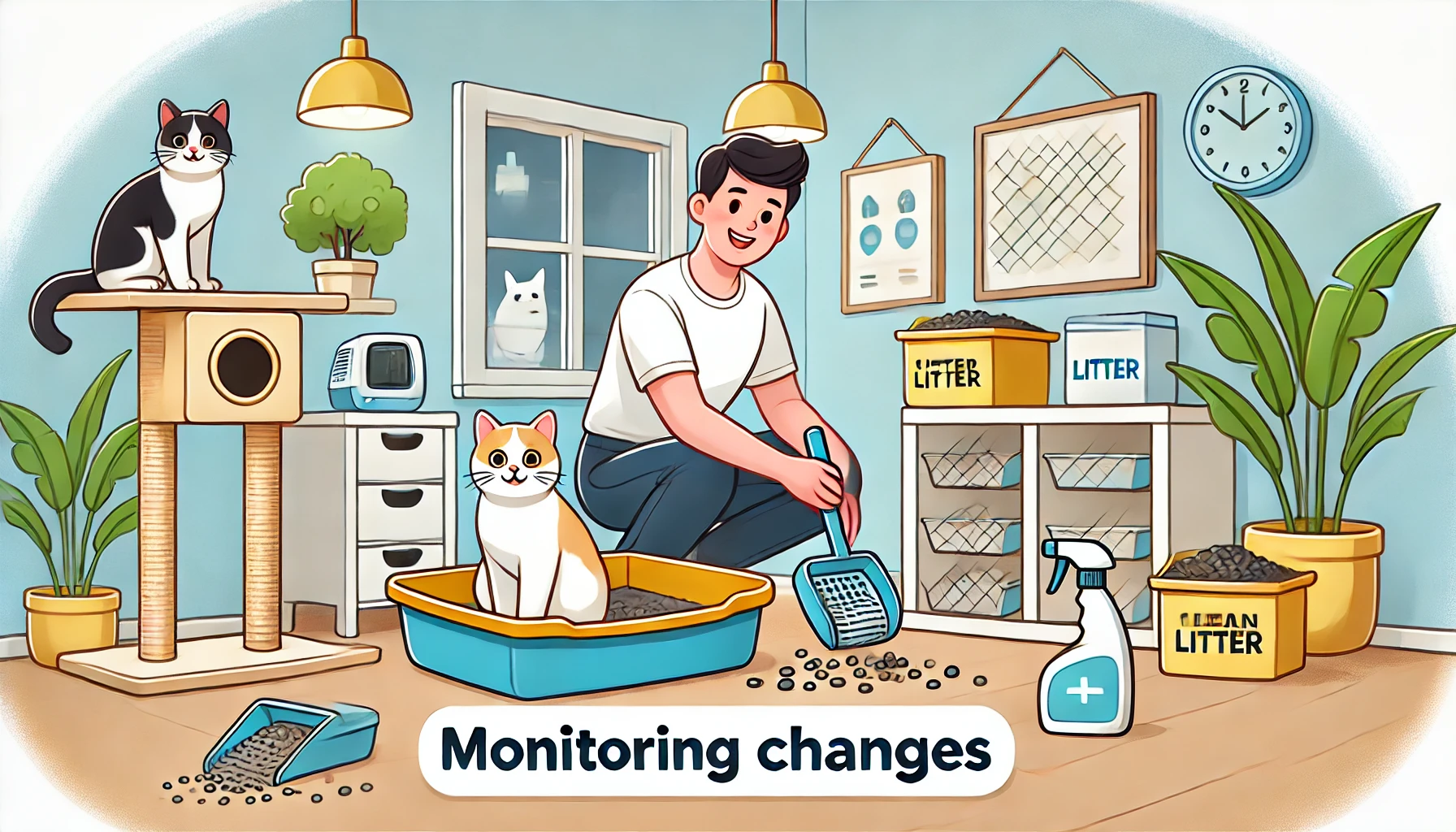
Cleaning Routines That Help Monitor Changes
A consistent cleaning routine is essential for effective litter box monitoring.
Clean the litter box daily to ensure you can spot changes in your cat’s elimination patterns.
A dirty box can hide important signs of health problems, such as changes in urine volume or stool consistency.
Keeping the box clean also encourages regular use, which makes it easier to track your cat’s habits.
- Daily cleaning: Clears waste and allows you to observe changes in litter box behavior.
- Complete litter change: Depending on the type of litter, replace the entire contents every week or two to maintain cleanliness and prevent odor buildup.
- Inspect waste for abnormalities: Take the opportunity during cleaning to inspect your cat’s waste for signs of blood, discoloration, or unusual consistency.
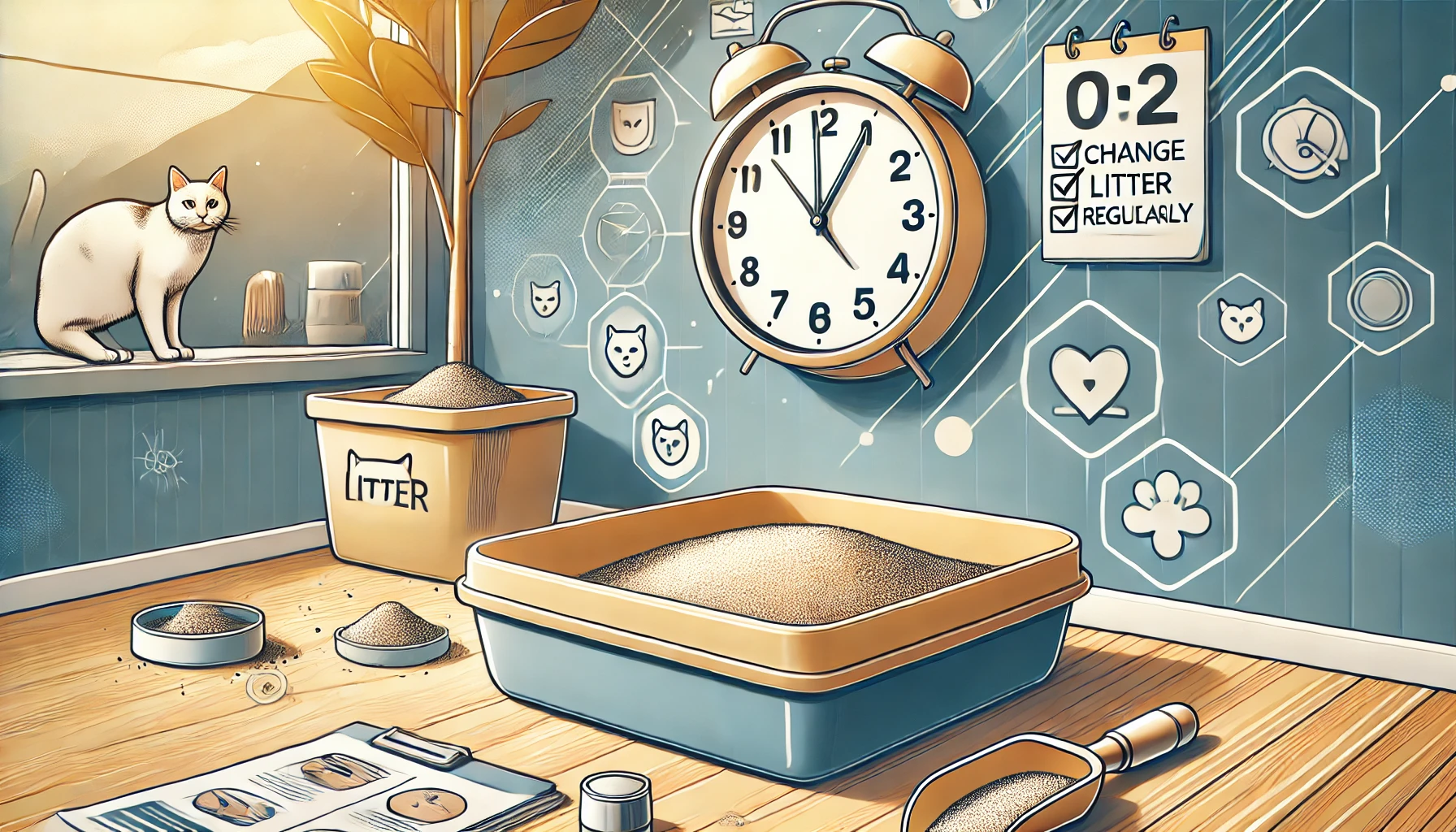
How Often to Change the Litter to Catch Early Signs of Health Issues
Regular litter changes are crucial not just for hygiene but also for monitoring your cat’s health.
Dirty litter can mask important signs like blood or changes in stool consistency.
For clumping litters, scoop out waste daily and replace the entire litter every couple of weeks.
If you’re using non-clumping litter, more frequent changes may be necessary to maintain cleanliness and visibility.
- Daily scooping: Keeps the litter box clean and allows for daily monitoring of health signs.
- Weekly or bi-weekly full litter change: Maintains a clean environment for your cat and improves your ability to spot potential health issues.
- Check for abnormalities: When cleaning, always check the size, color, and texture of waste to detect potential health problems early.
A clean and accessible litter box helps both you and your cat. Monitoring is much easier when you follow best practices in litter box setup.
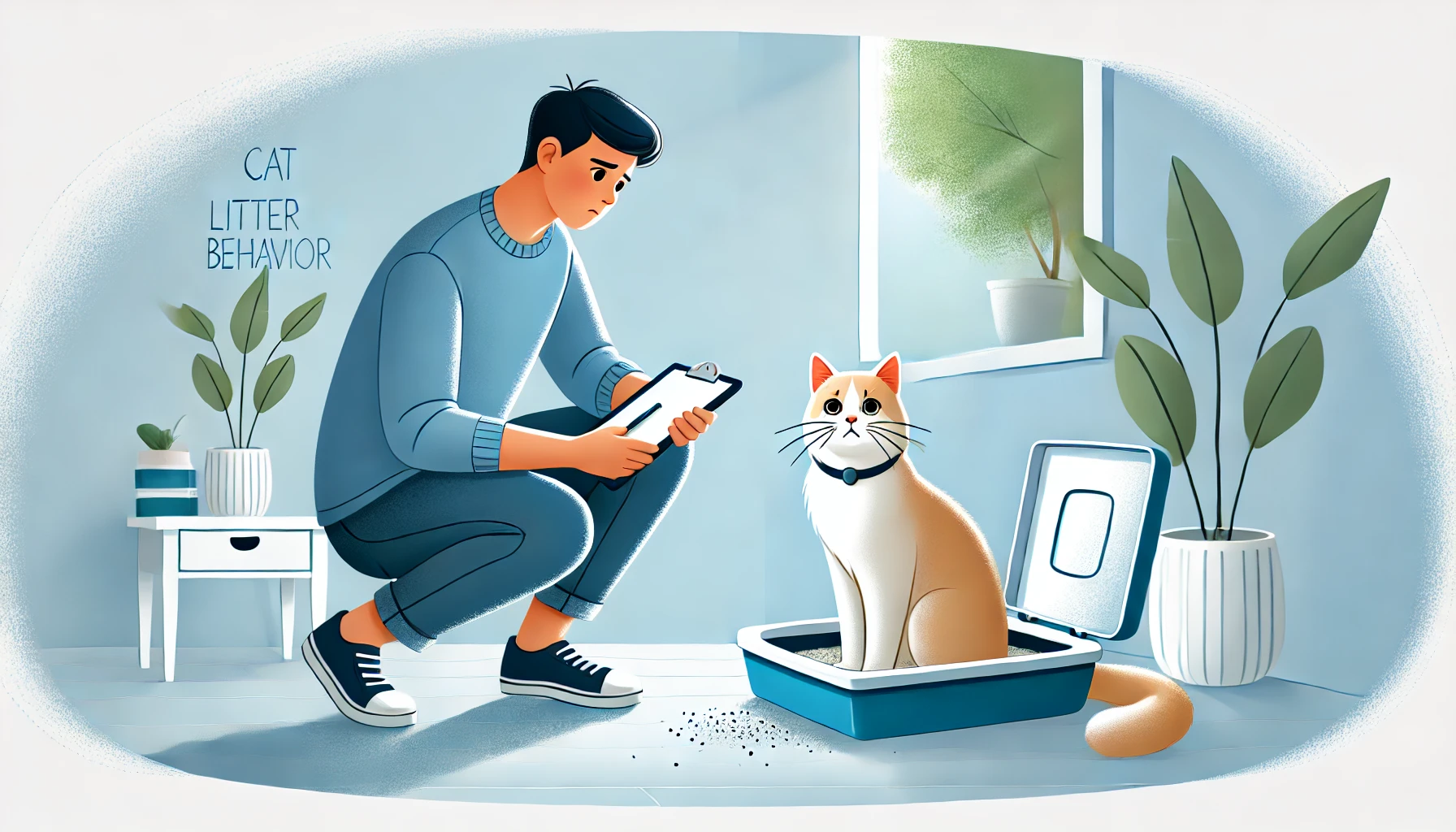
What to Do When You Notice Abnormal Litter Box Behavior
When your cat suddenly exhibits abnormal litter box behavior, you should immediately intervene and determine the underlying cause.
Whether your cat is urinating outside the box, showing unusual stool consistency, or frequently visiting the box with little or no output, these behaviors are often signs of early cat health issues.
Here, we discuss the actions you can take if you notice abnormal litter box behavior and how best to handle such problems.
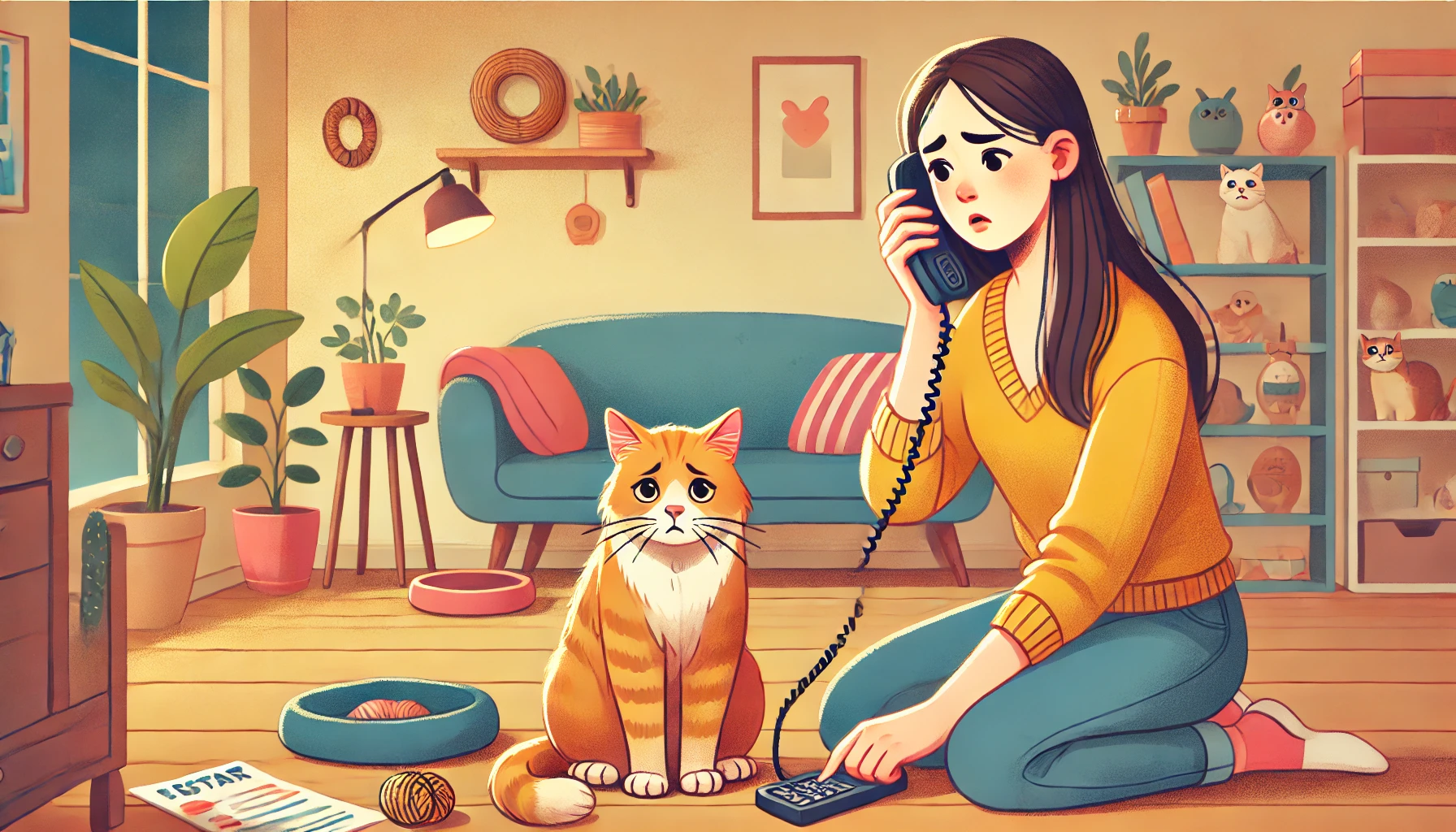
When to Call a Vet
Not every change in litter box behavior should cause alarm, but consistent changes usually point to a health issue.
If your cat’s litter box behavior changes drastically and remains that way for more than a day or two, it’s best to consult a veterinarian.
Early detection of health problems can prevent serious complications.
- Frequent urination with little output: This could indicate urinary tract infections (UTIs), obstructions, or kidney issues.
- Diarrhea lasting more than 48 hours: This may be due to infections, parasites, or food intolerances, all requiring veterinary attention.
- Constipation: If your cat is straining but producing little to no stool, it may point to gastrointestinal problems or dehydration.
- Blood in stool or urine: Visible blood is a serious red flag that calls for an immediate vet visit.
When in doubt, it’s always better to err on the side of caution and consult a professional.
A vet will often recommend diagnostic tests, such as urinalysis, blood tests, or imaging, to pinpoint the problem.
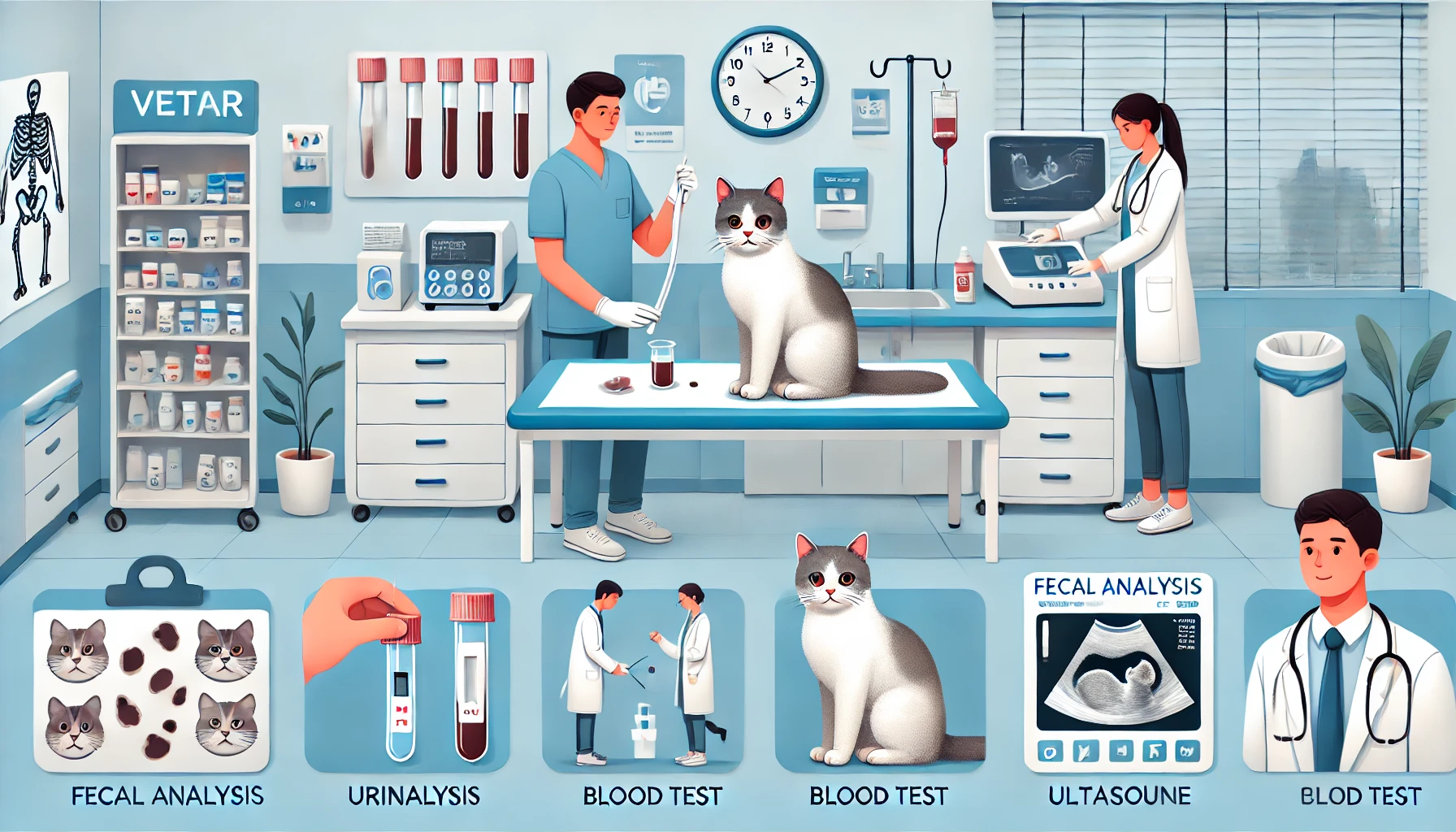
Common Tests to Diagnose Litter Box-Related Issues
When you take your cat to the vet due to abnormal litter box behavior, the vet will likely carry out several tests to find the underlying cause.
Knowing what to expect can help ease the apprehension associated with vet visits.
Common diagnostic tests include:
- Urinalysis: A routine test that checks for infection, kidney function, and urinary crystals that may cause blockages.
- Blood tests: Detect systemic issues like infection, organ failure, or diabetes that could be contributing to the problem.
- Fecal analysis: Identifies parasites, bacteria, or inflammation in the gastrointestinal tract.
- X-rays or ultrasounds: Imaging tests are used to detect obstructions, tumors, or other structural abnormalities in the digestive or urinary systems.
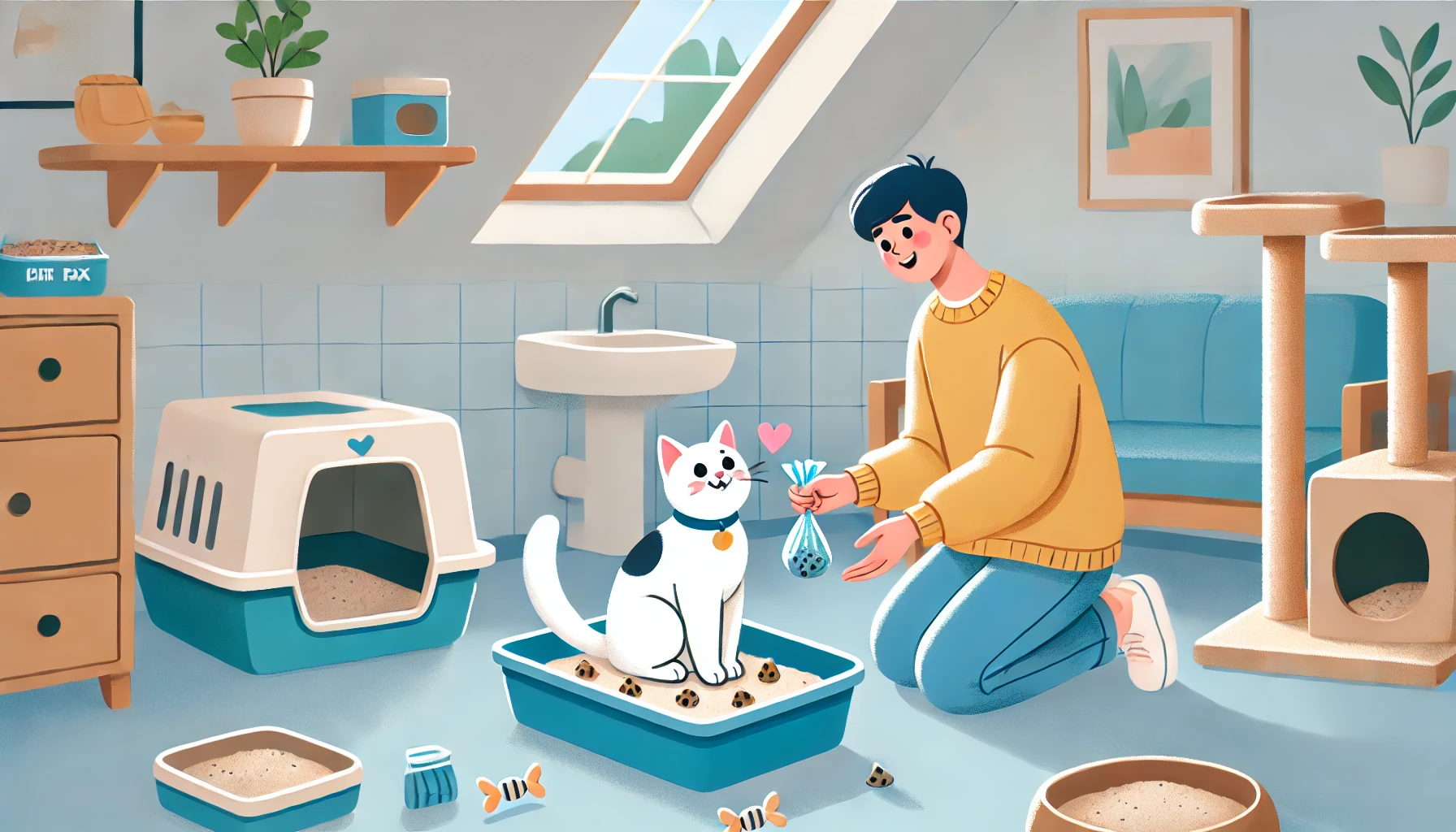
Behavioral Strategies to Encourage Proper Litter Box Behavior
If a medical issue has been ruled out, the abnormal behavior may stem from behavioral problems or environmental stress.
Early treatment of these issues can prevent them from becoming chronic.
Several steps can help your cat return to healthy litter box habits:
- Reduce stress: Place the litter box in a quiet, low-traffic area to reduce anxiety, especially if you have recently moved or brought in a new pet.
- Provide multiple litter boxes: For multi-cat households, the general rule is one litter box per cat to prevent territorial disputes.
- Change the litter type: Cats can be picky about litter. Experiment with different textures or unscented litter to find what your cat prefers.
- Positive reinforcement: Reward good litter box behavior with treats or affection to encourage consistency.
By addressing behavioral issues early, you can help your cat return to normal litter box habits and potentially prevent future health problems.
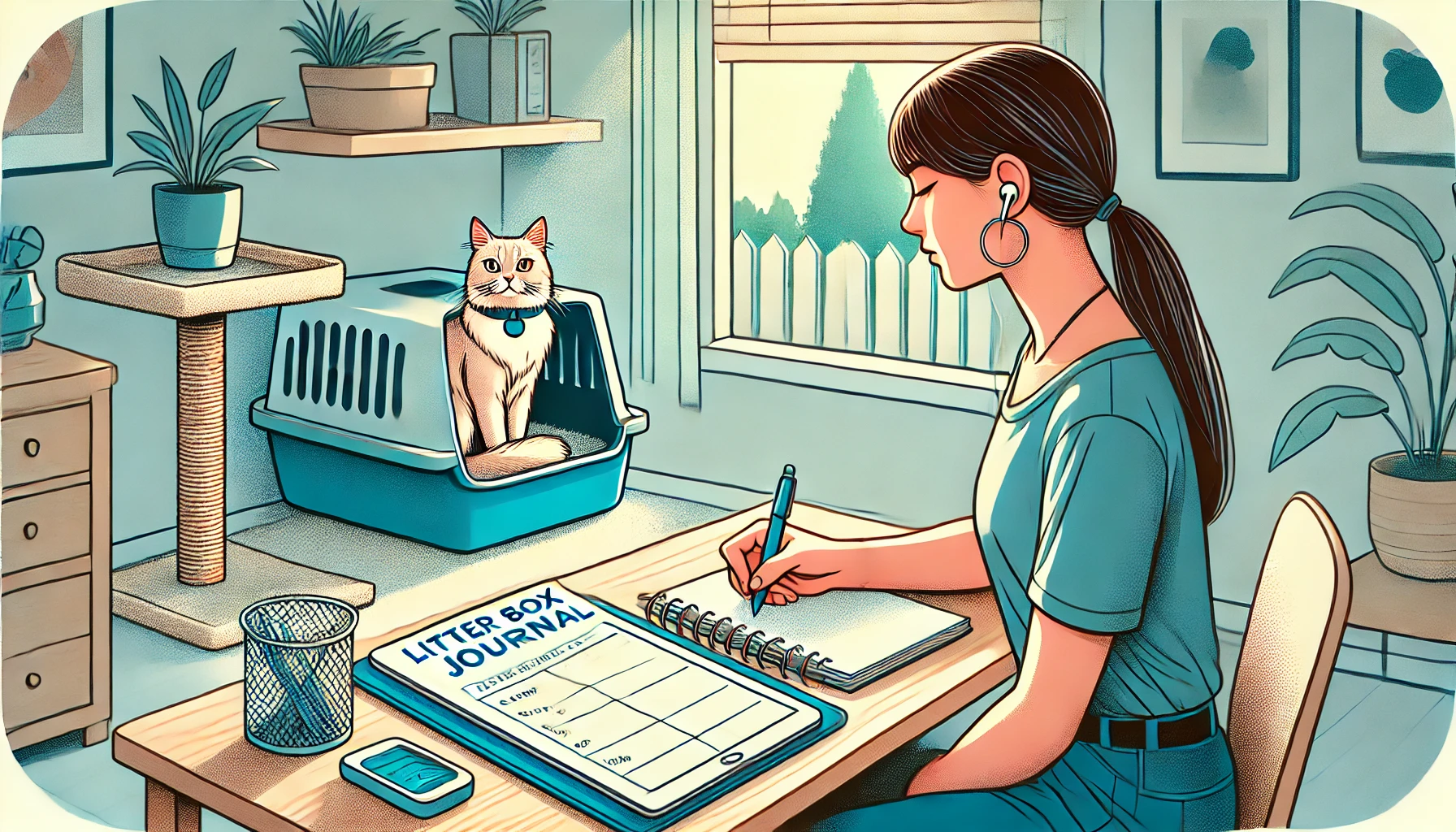
Tracking Health Changes with a Litter Box Journal
An effective way to keep track of your cat’s health is by maintaining a litter box journal.
This allows you to monitor patterns and detect gradual changes that may signal health problems.
You can record the frequency of litter box use, stool consistency, and other unusual behaviors.
This information can be valuable for your vet when making an early diagnosis.
- Frequency of visits: Record how often your cat urinates and defecates each day.
- Stool consistency: Take note of the size, shape, and texture of the stool, and document any changes from normal.
- Changes in urination: Monitor for signs of straining, blood, or abnormal urine color.
- Behavioral changes: Document any litter box avoidance or discomfort, as well as changes in eating or drinking habits.
Regularly tracking this information can help you spot small changes early, allowing you to address potential health issues before they escalate.
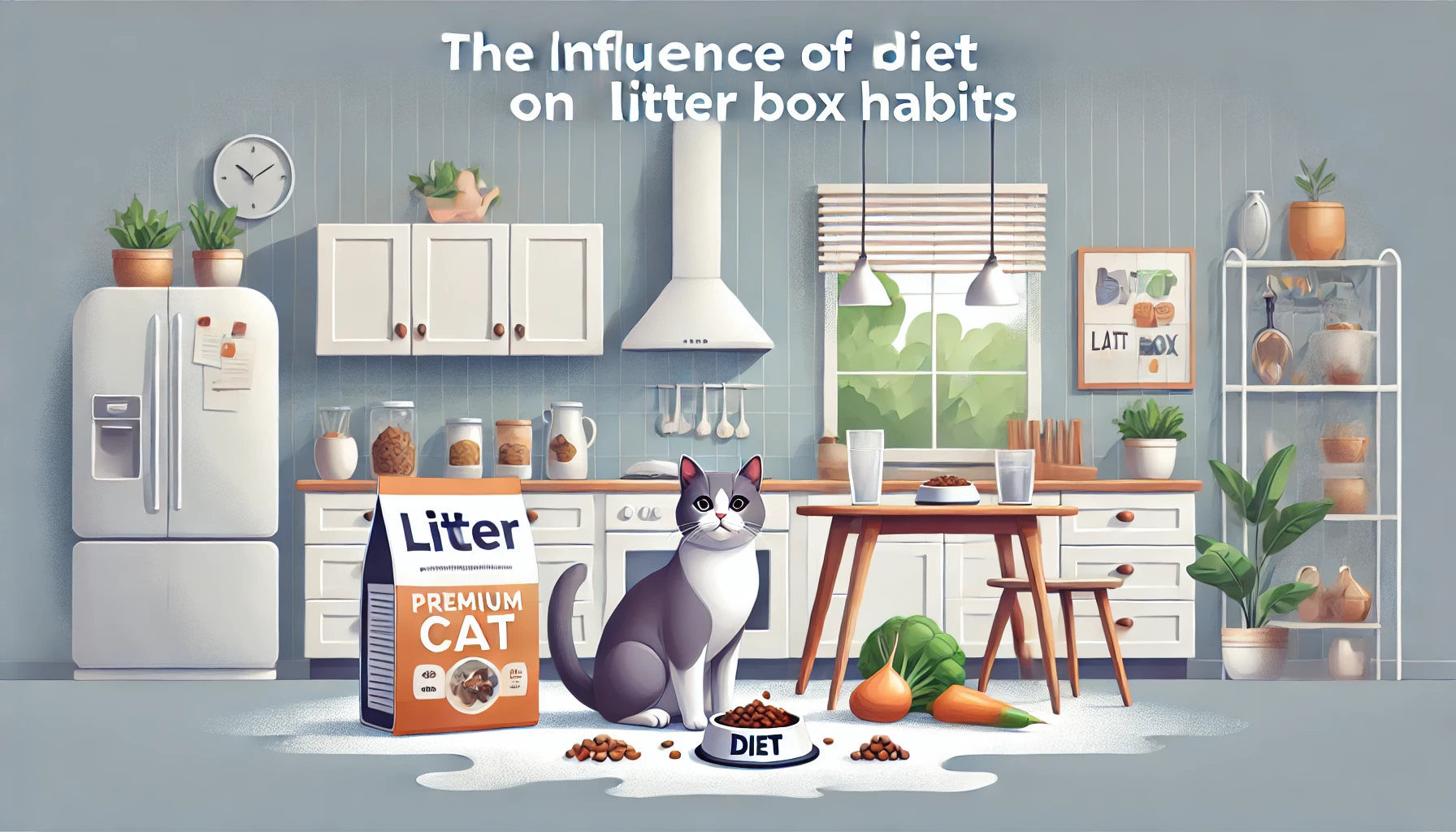
How Diet Can Influence Your Cat’s Litter Box Habits
Your cat’s diet plays a significant role in its litter box habits.
Poor-quality food can cause constipation, diarrhea, or other digestive issues.
Switching to a high-quality, fiber-rich diet with adequate moisture can promote healthy digestion and regular elimination.
Wet food, in particular, helps keep your cat hydrated and reduces the risk of urinary issues.
- High-fiber diets: Support healthy digestion and prevent constipation.
- Wet food: Helps your cat stay hydrated, promoting urinary health and preventing constipation.
- Grain-free options: Some cats are sensitive to grains, and switching to a grain-free diet may reduce digestive issues.
- Probiotics: Adding probiotics to your cat’s diet can improve gut health and stool consistency.
If you suspect your cat’s diet is affecting its litter box behavior, consult your vet about making adjustments to its food plan.
A healthy diet is a key component of your cat’s overall well-being and can significantly impact its elimination habits.
If your cat exhibits unusual litter box behavior, act quickly. Ignoring these signs could lead to worsening health problems.
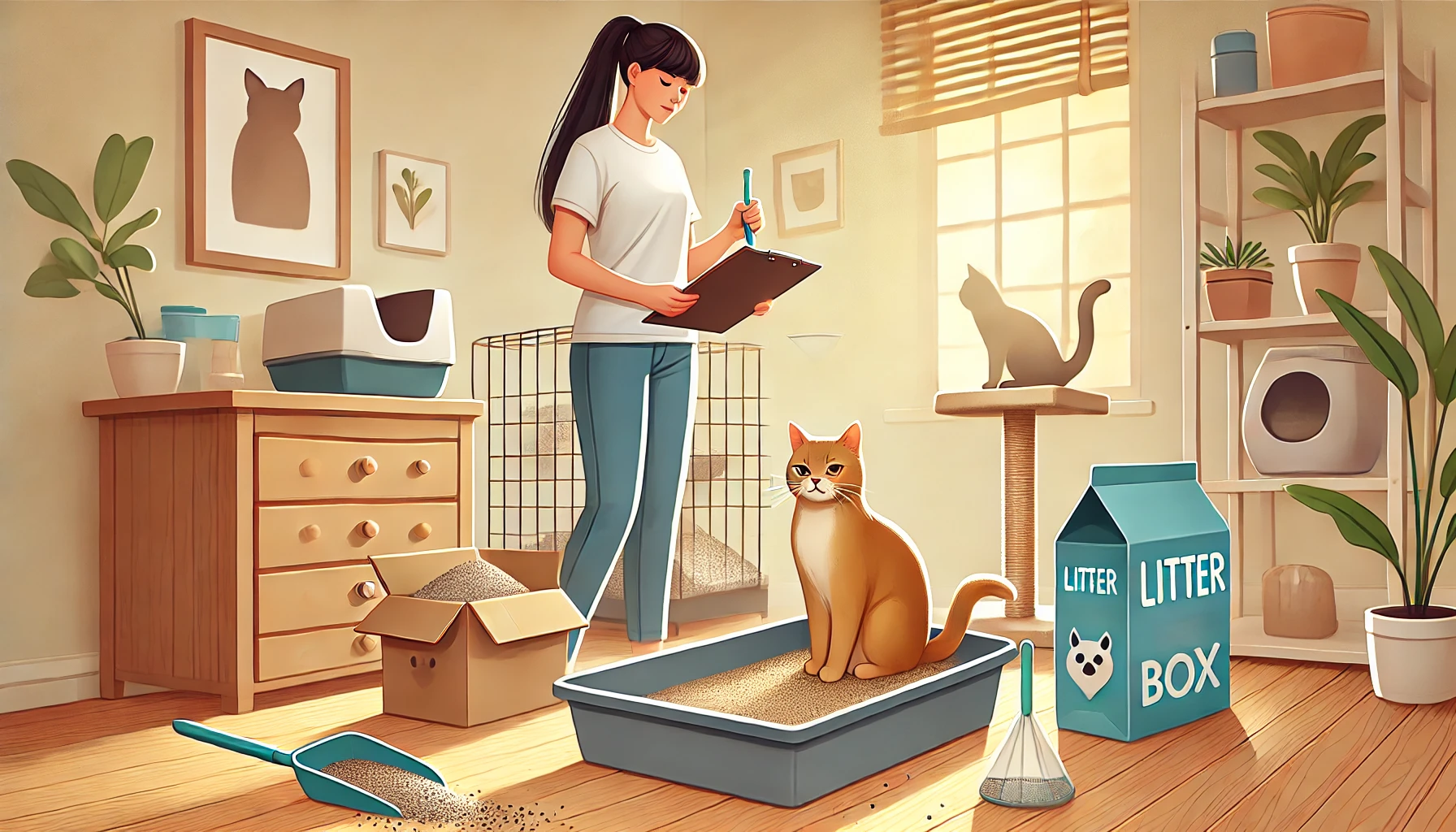
How to Prevent Litter Box Problems Before They Start
Prevention is always better than cure, and this holds true for litter box issues and your cat’s health.
By being proactive and ensuring that your cat is comfortable, stress-free, and following a good routine, you can minimize the chances of encountering litter box problems.
This section discusses various ways to prevent litter box issues and maintain your cat’s health.

The Role of Diet in Promoting Healthy Litter Box Habits
Your cat’s diet significantly impacts its litter box behavior.
A good diet helps balance your cat’s digestion for regular, healthy bowel movements.
High-fiber foods promote a healthy gut and reduce the risk of constipation.
On the other hand, low-quality foods or those filled with fillers can cause gastrointestinal distress, leading to diarrhea or constipation.
- Balanced diet: A diet rich in fiber, moisture, and nutrients supports normal digestion and bowel movements.
- Wet food: Provides proper hydration, which helps guard against urinary diseases and reduces constipation.
- High-quality protein: Cats are obligate carnivores, and high-quality protein is essential for overall health, including digestive and urinary functions.
- Grain-free diets: Some cats are sensitive to grains, and avoiding them may help reduce digestive upset.
Consulting with your vet about the right diet for your cat can help prevent many common litter box problems.
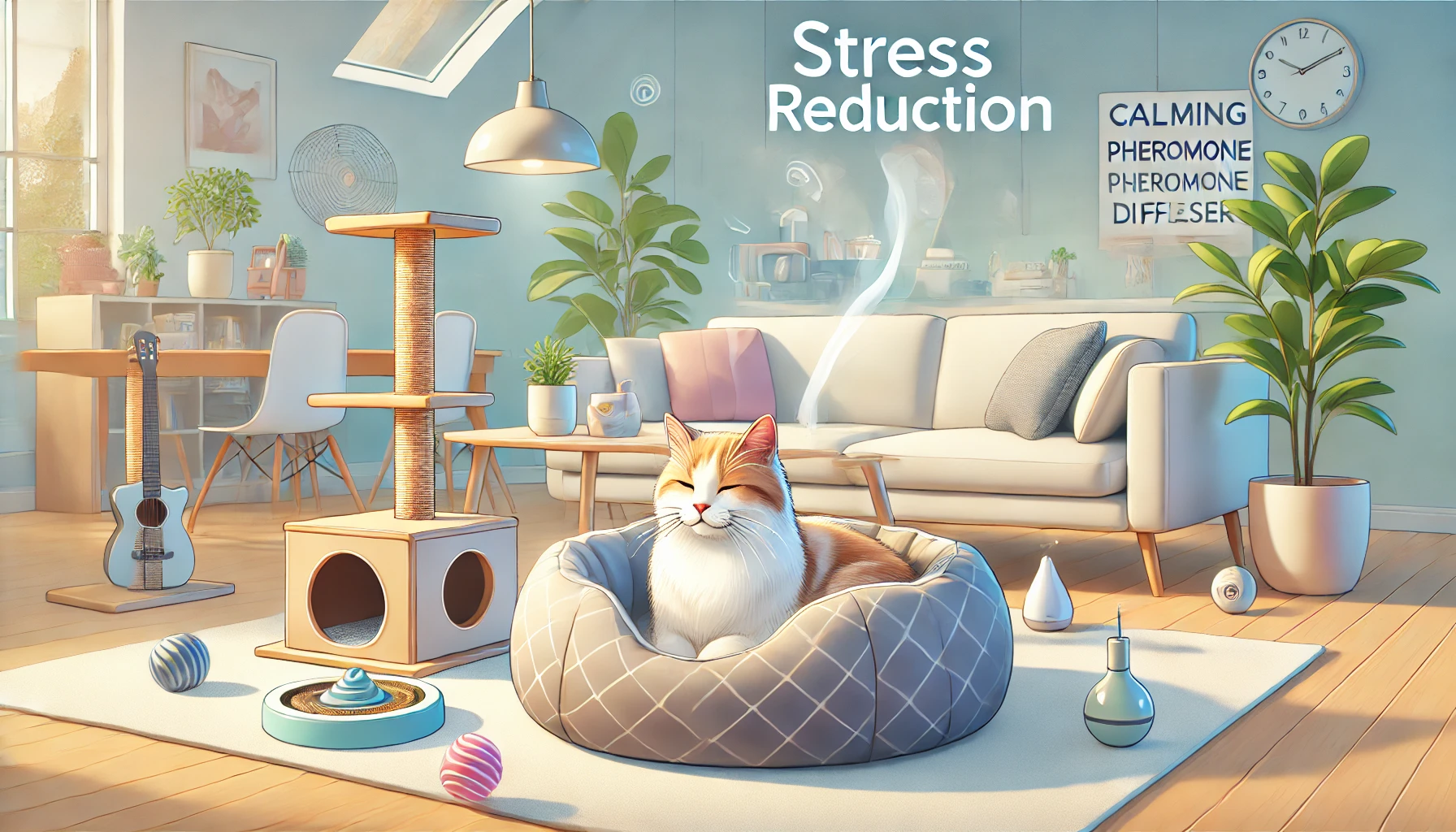
Stress Reduction Techniques for Cats
Stress is a major cause of litter box problems in cats.
A stressed cat is more likely to avoid the litter box, develop digestive issues, or experience urinary problems.
Multiple factors, such as changes in the environment, new pets, or disruptions to their routine, can cause stress.
It’s essential to maintain a calm and consistent environment to avoid problems.
- Establish a routine: Cats are creatures of habit, and it’s important to keep feeding, exercise, and play times on a consistent schedule.
- Provide a quiet area: Ensure your cat has a quiet, safe place to retreat to if it feels overwhelmed.
- Limit changes in the environment: Reduce stress levels at home by minimizing disruptions, such as changes in furniture or introducing new pets.
- Interactive play: Regular playtime helps reduce stress and stimulates your cat mentally and physically.
Controlling stress levels will help you avoid many behavioral problems that can cause litter box issues.
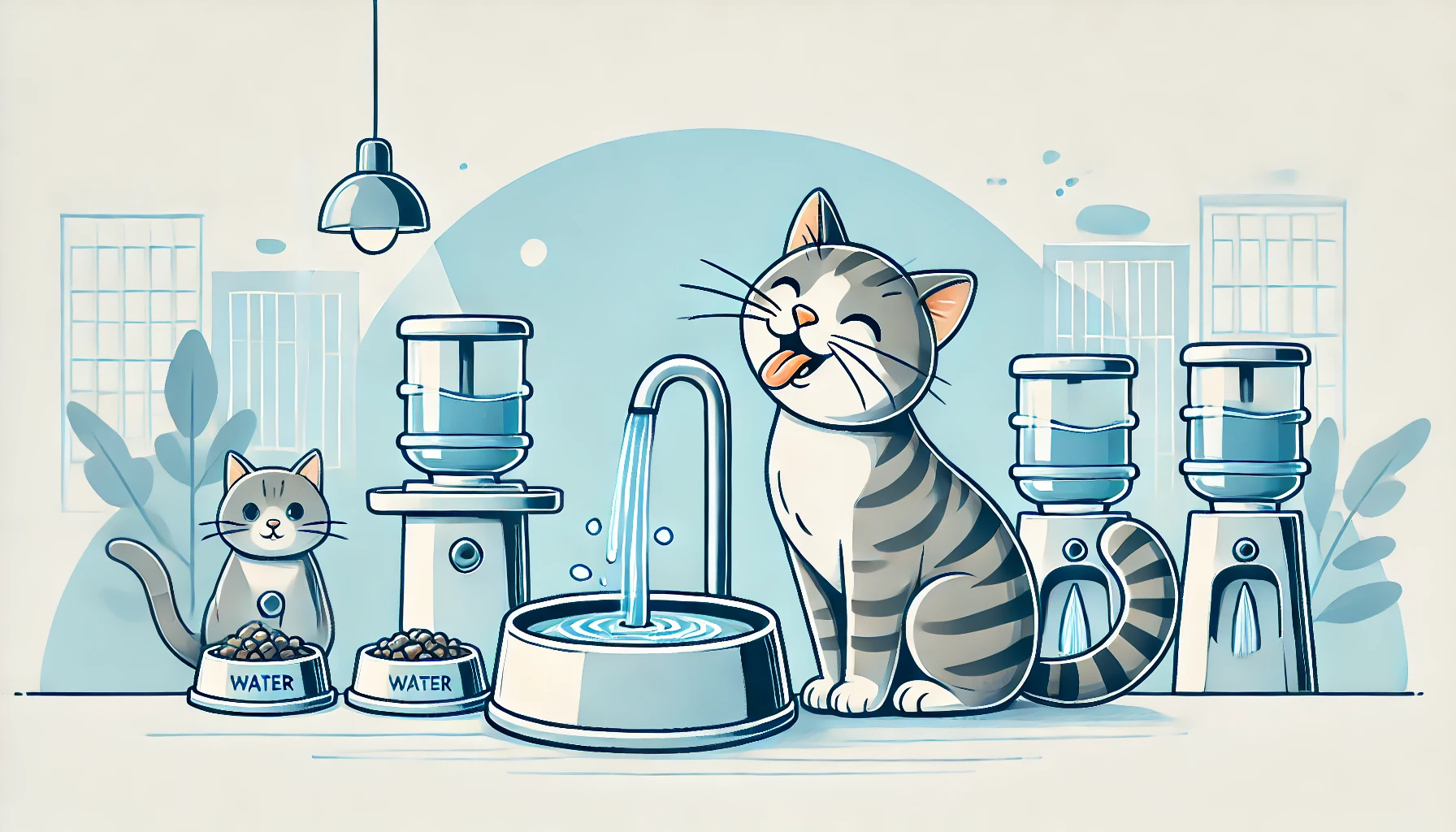
Keeping Your Cat Hydrated
Hydration is essential for maintaining your cat’s health, especially in preventing urinary and digestive problems.
Cats are prone to dehydration, which can lead to constipation, urinary tract infections, and other health issues.
Ensuring that your cat drinks enough water is critical for preventing these problems and promoting overall well-being.
- Promote water intake: Provide fresh water daily and encourage more drinking with a cat water fountain.
- Wet food: Adding wet food to your cat’s diet increases moisture intake.
- Dehydration watch: Symptoms of dehydration include dry gums, lethargy, and sunken eyes. If you observe these symptoms, consult a veterinarian.
Keeping your cat well-hydrated can prevent many common health issues that lead to litter box problems.
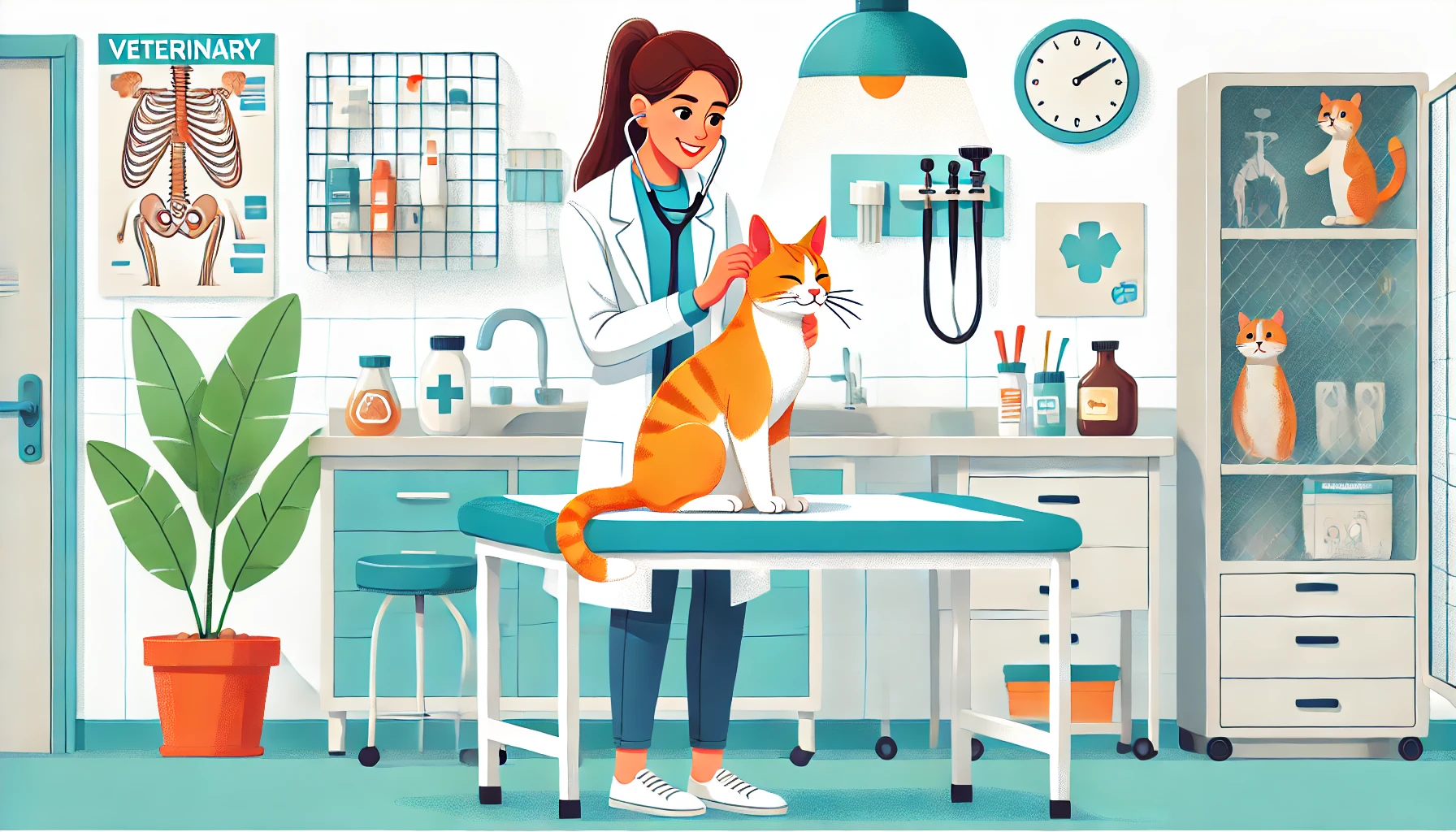
Regular Check-ups and Preventive Care
Regular veterinary visits are crucial for preventing litter box problems and ensuring your cat’s overall health.
Routine examinations allow your vet to detect potential problems early, such as urinary tract infections or gastrointestinal issues.
Preventive care like vaccinations, flea control, and regular deworming also reduces the risk of infections that can affect litter box behavior.
- Annual check-ups: Regular visits to the vet help detect health issues early, allowing for timely treatment.
- Vaccination and deworming: Preventive care can protect your cat from various infections that could affect its health.
- Weight management: Overweight cats are more prone to litter box issues, so maintaining a healthy weight is important.
- Intervene early: If you notice changes in your cat’s litter box habits, consult your vet for early diagnosis and treatment.
By staying proactive with regular vet care and monitoring your cat’s health, you can prevent many common litter box problems and keep your cat healthy.
Prevention is the best approach. By managing your cat’s diet, environment, and hydration, you can avoid most litter box issues.
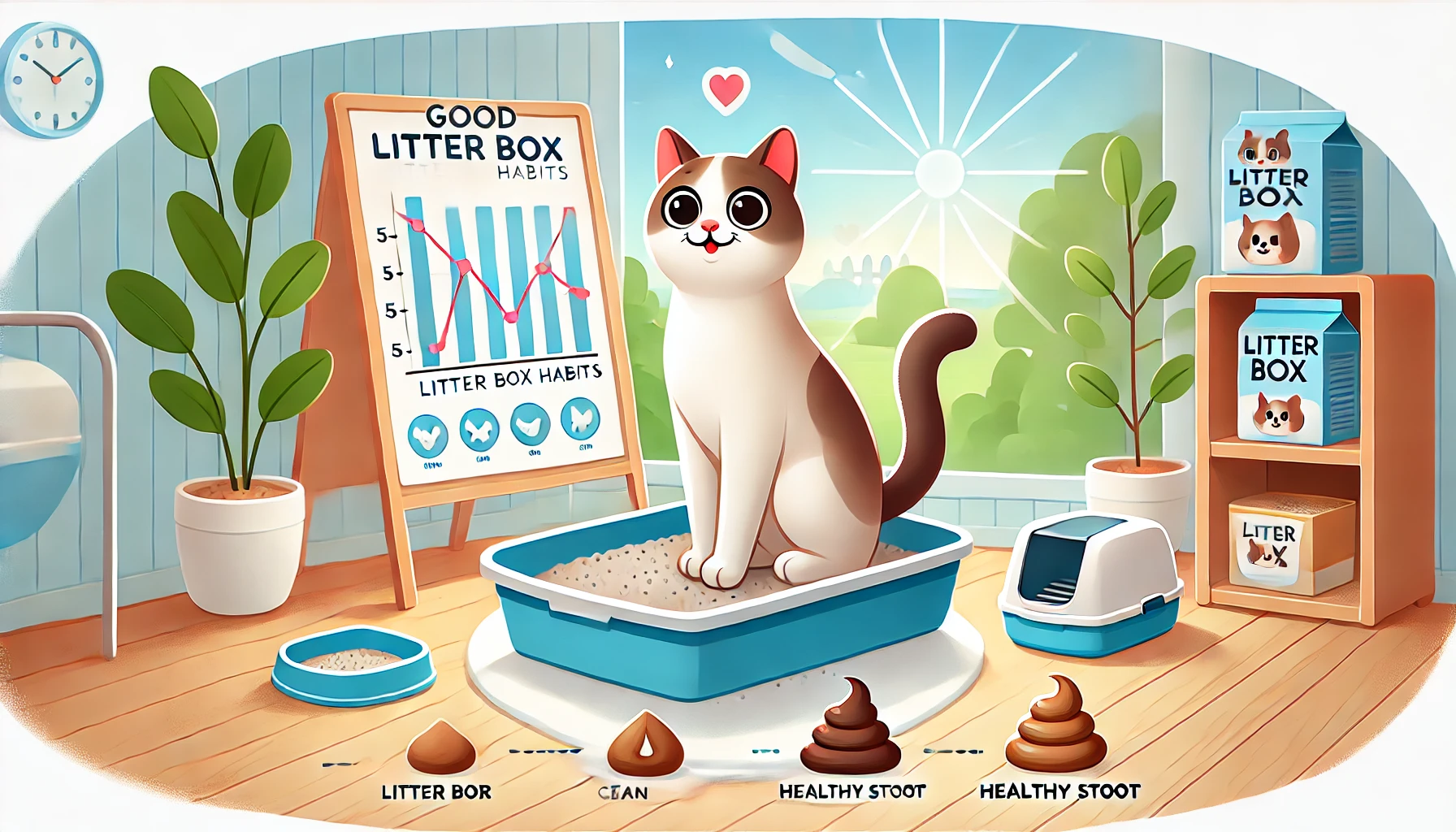
Overview: How Litter Box Habits Ensure Your Cat’s Health
The litter box habits of a cat are one of the most effective and least invasive ways to monitor your cat’s health.
From learning what normal behavior looks like to recognizing abnormal patterns, early detection can help prevent serious health complications.
Proper care and routine maintenance of the litter box, along with a healthy diet and regular visits to the veterinarian, will keep your cat as healthy as possible while avoiding many problems.
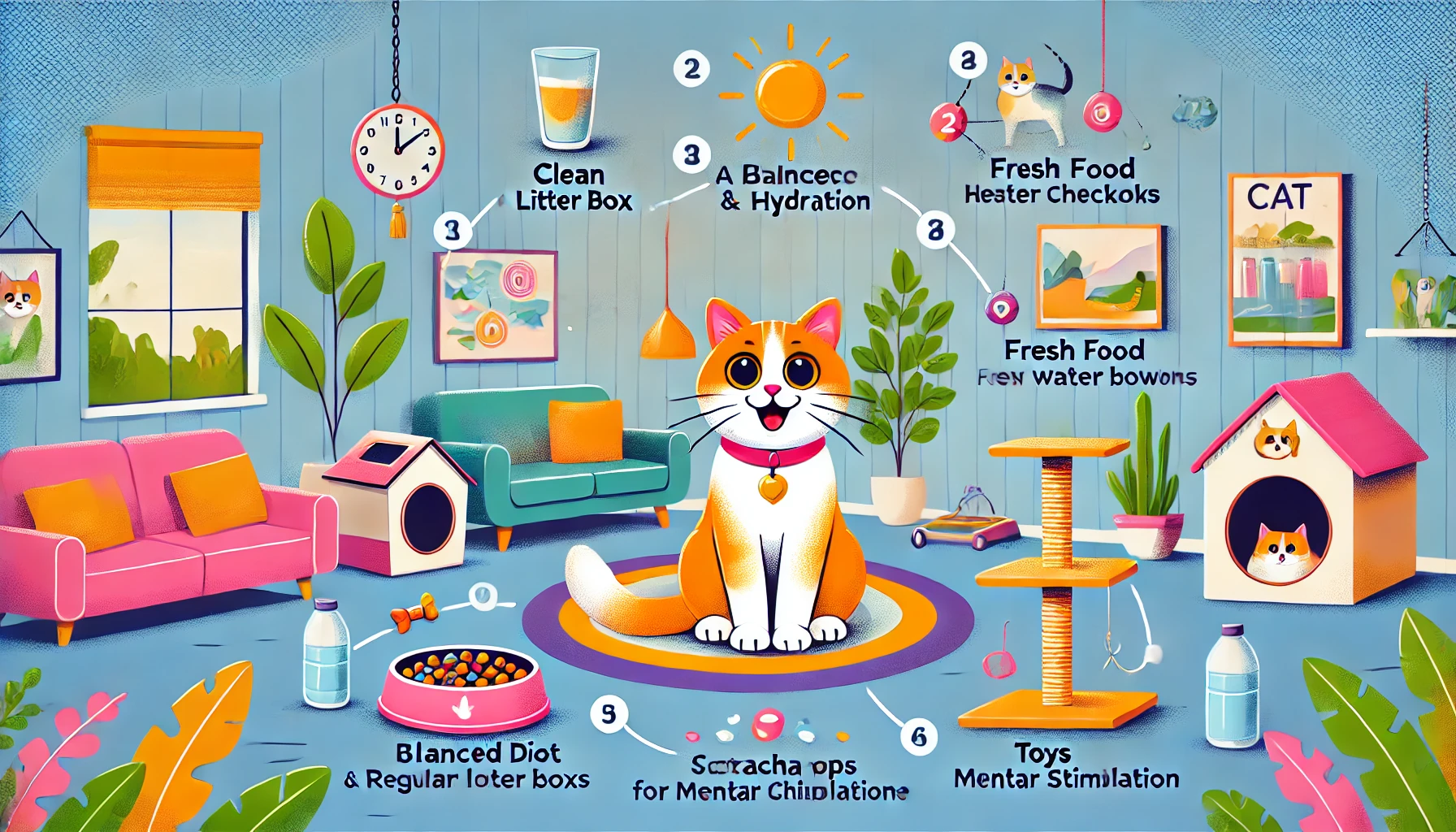
Key Takeaways for Maintaining Cat Health
Throughout this article, we have emphasized how observing your cat’s litter box behavior is important for understanding its overall health.
Here’s what you can do to ensure your cat remains in optimal health:
- Pay regular attention to your cat’s litter box behaviors, noting the frequency and consistency of urination and defecation.
- Ensure your cat has a balanced diet that includes fiber and moisture to support healthy digestion and urinary function.
- Keep the litter box clean and place it in a quiet, easily accessible area to encourage stress-free and frequent use.
- Proactively manage your cat’s stress by maintaining a stable environment and engaging in regular playtime.
- Hydrate your cat with fresh water daily, and include wet food in its diet to promote hydration and urinary health.
- Schedule regular checkups with your veterinarian for early detection of health issues. Make sure to stay up to date with vaccinations, deworming treatments, and general preventive care.
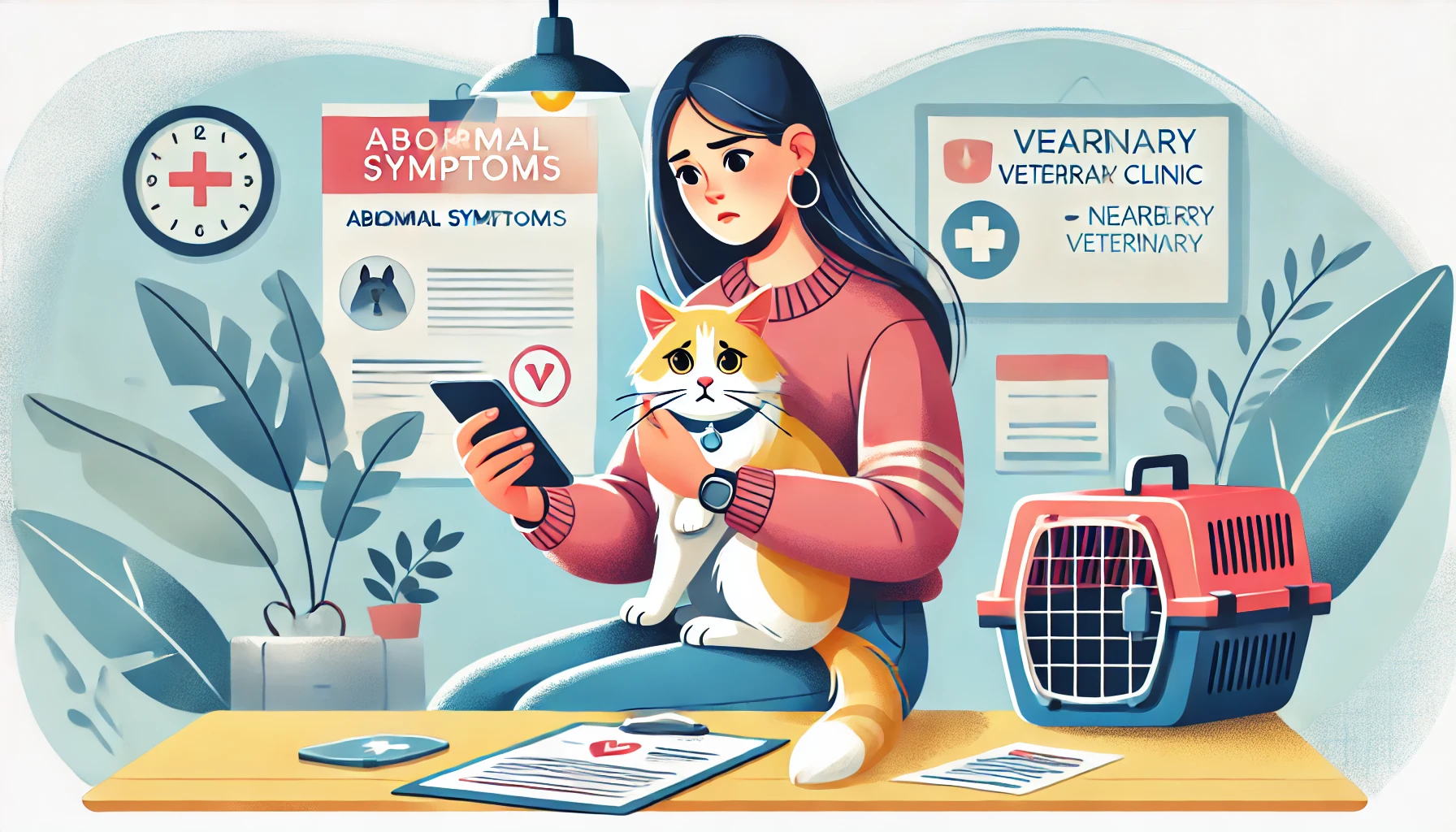
Our Actions in Case of Abnormal Conditions
Take immediate action if you notice any changes in your cat’s litter box behavior, such as frequent urination, diarrhea, constipation, or visible blood.
The sooner an issue is identified and treated, the better the chances of avoiding serious health problems.
Consulting your vet and maintaining a litter box journal to track changes in behavior are both effective ways to manage your cat’s health.
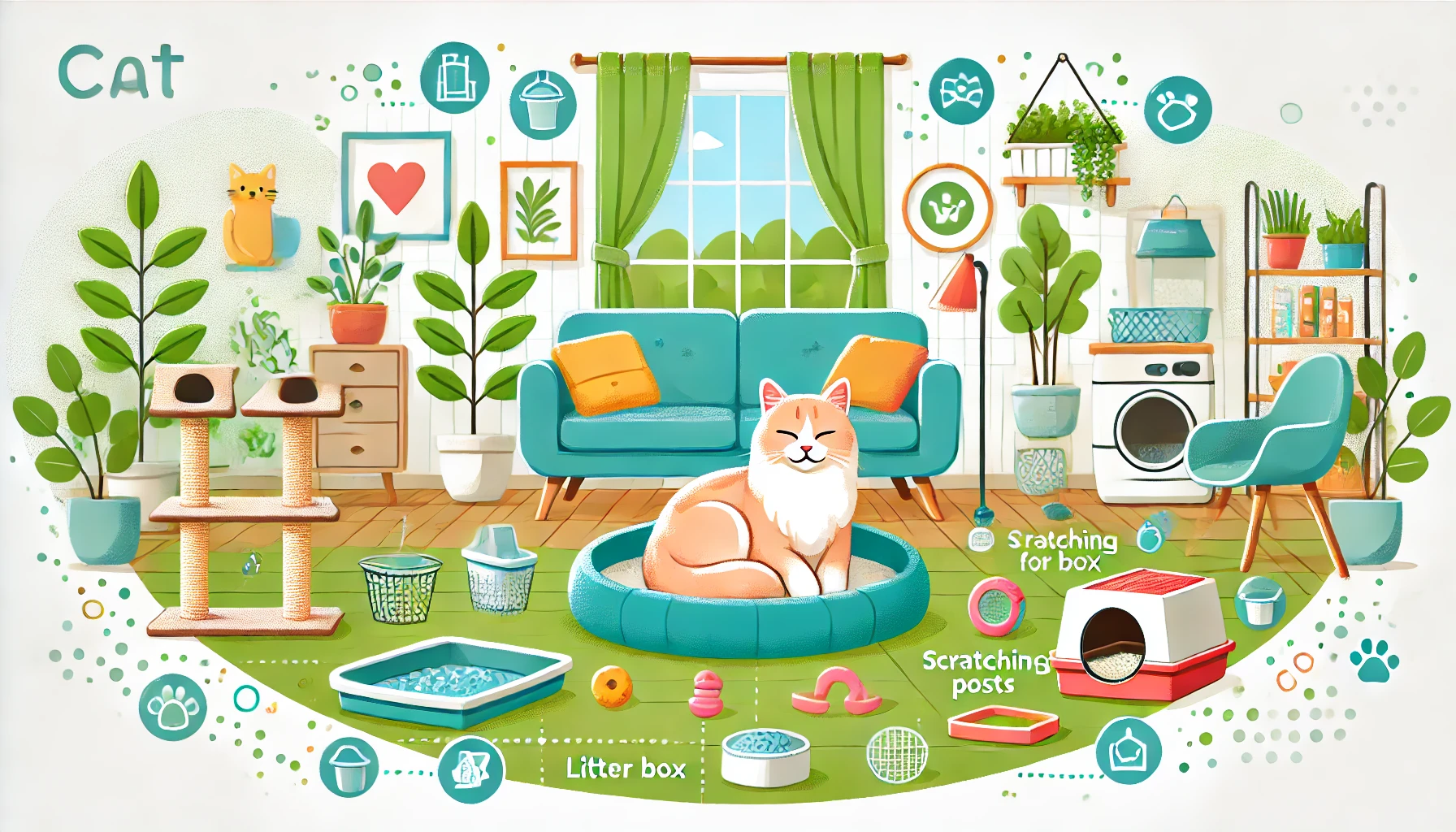
Creating a Healthy Environment for Your Cat
Providing a comfortable and stress-free environment is essential for your cat’s overall health.
Addressing health holistically—by maintaining proper nutrition, keeping the litter box clean, and managing your cat’s stress—can help prevent many common health problems that manifest through litter box behavior.
Small adjustments in your cat’s routine can significantly improve its well-being.
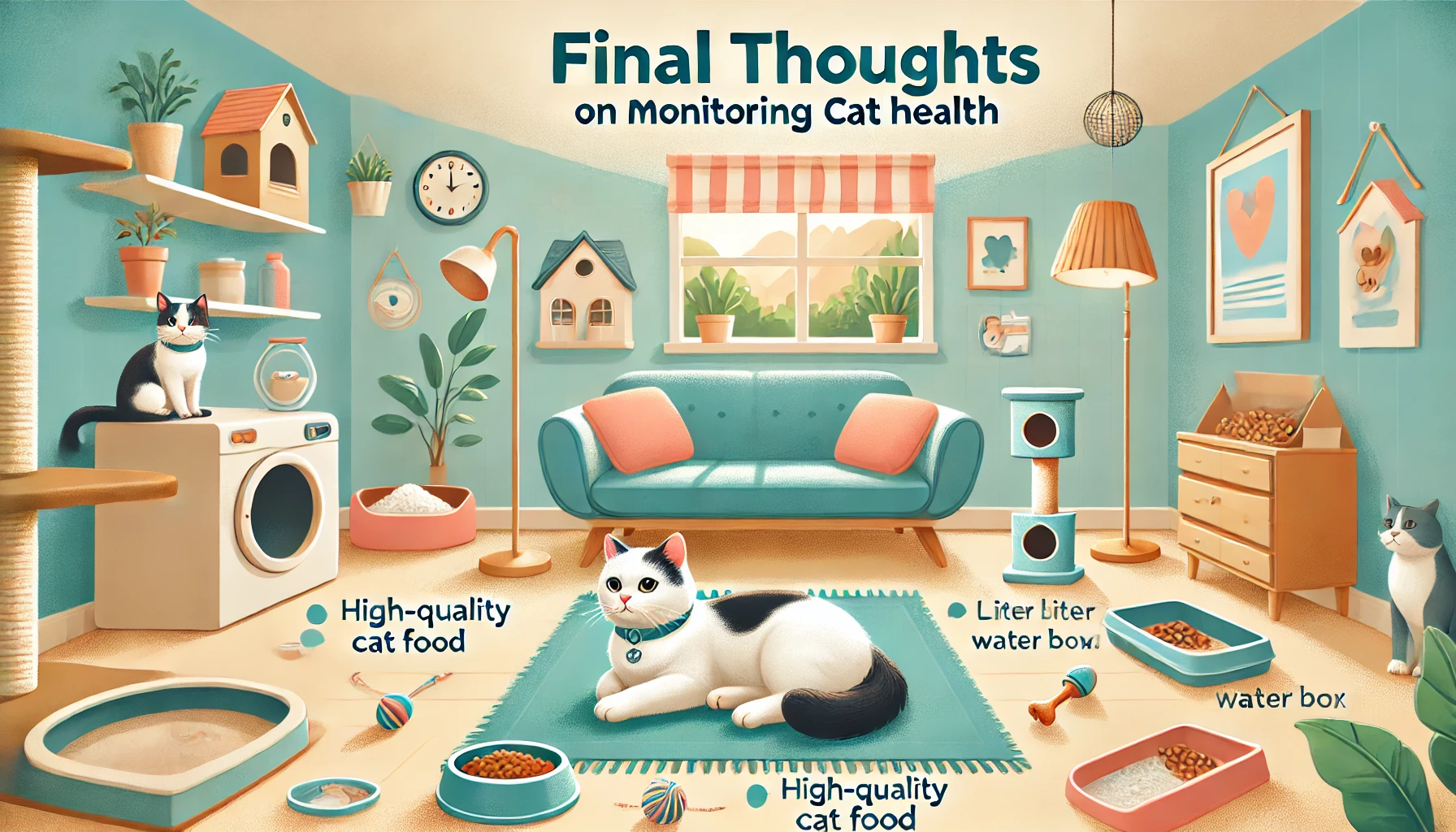
Final Thoughts on Monitoring Cat Health
Monitoring your cat’s litter box habits regularly is an easy yet powerful tool for safeguarding its health.
By staying observant, creating the right environment, and providing proper care, you can minimize health-related issues in your feline friend.
As the saying goes, prevention is better than cure, and by following these steps, you are well on your way to ensuring that your cat enjoys a long and healthy life.
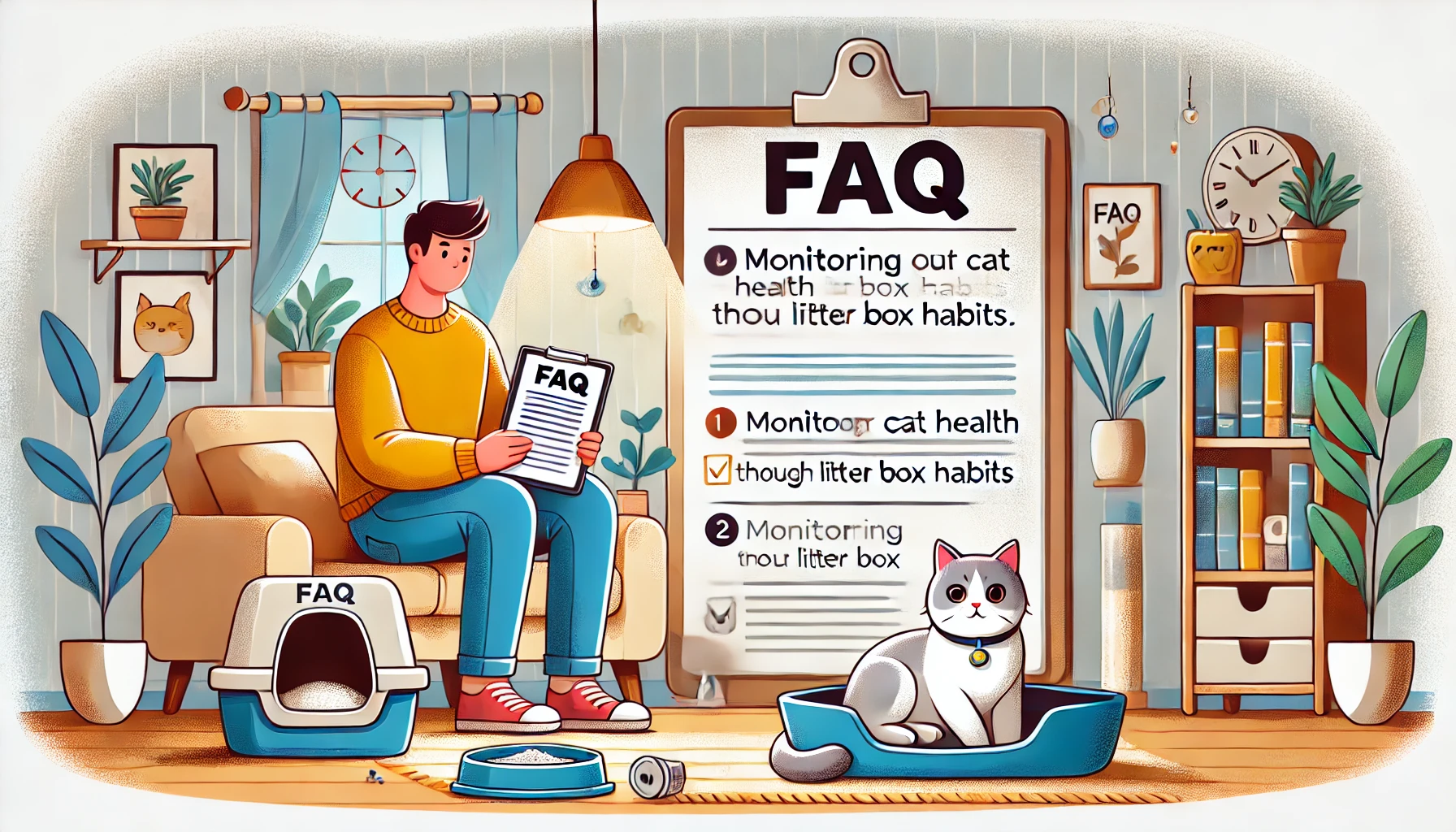
FAQs About Monitoring Cat Health Through Litter Box Habits
Following are some common questions posed by cat owners about their cat’s litter box habits and how these behaviors relate to overall health.
Monitoring your cat’s litter box use is crucial for detecting health problems early.
How often should I clean my cat's litter box?
Daily scooping of waste, along with a full litter change every one to two weeks, depending on the litter type, is recommended.
Regular cleaning helps monitor your cat’s health by making changes in behavior easier to notice.
My cat is urinating a lot. What does this mean?
Frequent urination could indicate a urinary tract infection, bladder stones, or kidney problems.
If your cat visits the litter box often but eliminates little urine, consult a veterinarian for proper diagnosis and treatment.
How do I get my cat to use the litter box?
Keep the litter box clean, place it in a quiet, accessible location, and try switching litter types if your cat is avoiding the box.
Reducing stress and maintaining consistency may also encourage proper litter box use.
What should I do if I find blood in my cat's stool or urine?
Blood in your cat’s stool or urine is an urgent issue requiring immediate veterinary attention.
This can signal infections, inflammation, or other health issues that need quick diagnosis and treatment to prevent complications.
How does my cat's diet affect its litter box habits?
Your cat’s diet plays a significant role in litter box behavior.
A diet high in fiber and moisture helps prevent constipation and promotes regular, healthy bowel movements.
Wet food and high-quality protein also reduce urinary and digestive issues.
Why is my cat avoiding the litter box?
Litter box avoidance can be due to stress, dirty litter, or illness.
Make sure the box is clean, placed in a quiet area, and out of heavy foot traffic.
If avoidance persists, consult a vet to rule out medical or behavioral problems.
What are the signs of dehydration in cats?
Signs of dehydration in cats include dry gums, sunken eyes, and lethargy.
Ensure your cat is drinking enough water.
Adding wet food to its diet can help keep your cat hydrated and prevent urinary tract infections.

